How to write a research plan: Step-by-step guide
Last updated
30 January 2024
Reviewed by
Today’s businesses and institutions rely on data and analytics to inform their product and service decisions. These metrics influence how organizations stay competitive and inspire innovation. However, gathering data and insights requires carefully constructed research, and every research project needs a roadmap. This is where a research plan comes into play.
There’s general research planning; then there’s an official, well-executed research plan. Whatever data-driven research project you’re gearing up for, the research plan will be your framework for execution. The plan should also be detailed and thorough, with a diligent set of criteria to formulate your research efforts. Not including these key elements in your plan can be just as harmful as having no plan at all.
Read this step-by-step guide for writing a detailed research plan that can apply to any project, whether it’s scientific, educational, or business-related.
- What is a research plan?
A research plan is a documented overview of a project in its entirety, from end to end. It details the research efforts, participants, and methods needed, along with any anticipated results. It also outlines the project’s goals and mission, creating layers of steps to achieve those goals within a specified timeline.
Without a research plan, you and your team are flying blind, potentially wasting time and resources to pursue research without structured guidance.
The principal investigator, or PI, is responsible for facilitating the research oversight. They will create the research plan and inform team members and stakeholders of every detail relating to the project. The PI will also use the research plan to inform decision-making throughout the project.
- Why do you need a research plan?
Create a research plan before starting any official research to maximize every effort in pursuing and collecting the research data. Crucially, the plan will model the activities needed at each phase of the research project.
Like any roadmap, a research plan serves as a valuable tool providing direction for those involved in the project—both internally and externally. It will keep you and your immediate team organized and task-focused while also providing necessary definitions and timelines so you can execute your project initiatives with full understanding and transparency.
External stakeholders appreciate a working research plan because it’s a great communication tool, documenting progress and changing dynamics as they arise. Any participants of your planned research sessions will be informed about the purpose of your study, while the exercises will be based on the key messaging outlined in the official plan.
Here are some of the benefits of creating a research plan document for every project:
Project organization and structure
Well-informed participants
All stakeholders and teams align in support of the project
Clearly defined project definitions and purposes
Distractions are eliminated, prioritizing task focus
Timely management of individual task schedules and roles
Costly reworks are avoided
- What should a research plan include?
The different aspects of your research plan will depend on the nature of the project. However, most official research plan documents will include the core elements below. Each aims to define the problem statement, devising an official plan for seeking a solution.
Specific project goals and individual objectives
Ideal strategies or methods for reaching those goals
Required resources
Descriptions of the target audience, sample sizes, demographics, and scopes
Key performance indicators (KPIs)
Project background
Research and testing support
Preliminary studies and progress reporting mechanisms
Cost estimates and change order processes
Depending on the research project’s size and scope, your research plan could be brief—perhaps only a few pages of documented plans. Alternatively, it could be a fully comprehensive report. Either way, it’s an essential first step in dictating your project’s facilitation in the most efficient and effective way.
- How to write a research plan for your project
When you start writing your research plan, aim to be detailed about each step, requirement, and idea. The more time you spend curating your research plan, the more precise your research execution efforts will be.
Account for every potential scenario, and be sure to address each and every aspect of the research.
Consider following this flow to develop a great research plan for your project:

Define your project’s purpose
Start by defining your project’s purpose. Identify what your project aims to accomplish and what you are researching. Remember to use clear language.
Thinking about the project’s purpose will help you set realistic goals and inform how you divide tasks and assign responsibilities. These individual tasks will be your stepping stones to reach your overarching goal.
Additionally, you’ll want to identify the specific problem, the usability metrics needed, and the intended solutions.
Know the following three things about your project’s purpose before you outline anything else:
What you’re doing
Why you’re doing it
What you expect from it
Identify individual objectives
With your overarching project objectives in place, you can identify any individual goals or steps needed to reach those objectives. Break them down into phases or steps. You can work backward from the project goal and identify every process required to facilitate it.
Be mindful to identify each unique task so that you can assign responsibilities to various team members. At this point in your research plan development, you’ll also want to assign priority to those smaller, more manageable steps and phases that require more immediate or dedicated attention.
Select research methods
Research methods might include any of the following:
User interviews: this is a qualitative research method where researchers engage with participants in one-on-one or group conversations. The aim is to gather insights into their experiences, preferences, and opinions to uncover patterns, trends, and data.
Field studies: this approach allows for a contextual understanding of behaviors, interactions, and processes in real-world settings. It involves the researcher immersing themselves in the field, conducting observations, interviews, or experiments to gather in-depth insights.
Card sorting: participants categorize information by sorting content cards into groups based on their perceived similarities. You might use this process to gain insights into participants’ mental models and preferences when navigating or organizing information on websites, apps, or other systems.
Focus groups: use organized discussions among select groups of participants to provide relevant views and experiences about a particular topic.
Diary studies: ask participants to record their experiences, thoughts, and activities in a diary over a specified period. This method provides a deeper understanding of user experiences, uncovers patterns, and identifies areas for improvement.
Five-second testing: participants are shown a design, such as a web page or interface, for just five seconds. They then answer questions about their initial impressions and recall, allowing you to evaluate the design’s effectiveness.
Surveys: get feedback from participant groups with structured surveys. You can use online forms, telephone interviews, or paper questionnaires to reveal trends, patterns, and correlations.
Tree testing: tree testing involves researching web assets through the lens of findability and navigability. Participants are given a textual representation of the site’s hierarchy (the “tree”) and asked to locate specific information or complete tasks by selecting paths.
Usability testing: ask participants to interact with a product, website, or application to evaluate its ease of use. This method enables you to uncover areas for improvement in digital key feature functionality by observing participants using the product.
Live website testing: research and collect analytics that outlines the design, usability, and performance efficiencies of a website in real time.
There are no limits to the number of research methods you could use within your project. Just make sure your research methods help you determine the following:
What do you plan to do with the research findings?
What decisions will this research inform? How can your stakeholders leverage the research data and results?
Recruit participants and allocate tasks
Next, identify the participants needed to complete the research and the resources required to complete the tasks. Different people will be proficient at different tasks, and having a task allocation plan will allow everything to run smoothly.
Prepare a thorough project summary
Every well-designed research plan will feature a project summary. This official summary will guide your research alongside its communications or messaging. You’ll use the summary while recruiting participants and during stakeholder meetings. It can also be useful when conducting field studies.
Ensure this summary includes all the elements of your research project. Separate the steps into an easily explainable piece of text that includes the following:
An introduction: the message you’ll deliver to participants about the interview, pre-planned questioning, and testing tasks.
Interview questions: prepare questions you intend to ask participants as part of your research study, guiding the sessions from start to finish.
An exit message: draft messaging your teams will use to conclude testing or survey sessions. These should include the next steps and express gratitude for the participant’s time.
Create a realistic timeline
While your project might already have a deadline or a results timeline in place, you’ll need to consider the time needed to execute it effectively.
Realistically outline the time needed to properly execute each supporting phase of research and implementation. And, as you evaluate the necessary schedules, be sure to include additional time for achieving each milestone in case any changes or unexpected delays arise.
For this part of your research plan, you might find it helpful to create visuals to ensure your research team and stakeholders fully understand the information.
Determine how to present your results
A research plan must also describe how you intend to present your results. Depending on the nature of your project and its goals, you might dedicate one team member (the PI) or assume responsibility for communicating the findings yourself.
In this part of the research plan, you’ll articulate how you’ll share the results. Detail any materials you’ll use, such as:
Presentations and slides
A project report booklet
A project findings pamphlet
Documents with key takeaways and statistics
Graphic visuals to support your findings
- Format your research plan
As you create your research plan, you can enjoy a little creative freedom. A plan can assume many forms, so format it how you see fit. Determine the best layout based on your specific project, intended communications, and the preferences of your teams and stakeholders.
Find format inspiration among the following layouts:
Written outlines
Narrative storytelling
Visual mapping
Graphic timelines
Remember, the research plan format you choose will be subject to change and adaptation as your research and findings unfold. However, your final format should ideally outline questions, problems, opportunities, and expectations.
- Research plan example
Imagine you’ve been tasked with finding out how to get more customers to order takeout from an online food delivery platform. The goal is to improve satisfaction and retain existing customers. You set out to discover why more people aren’t ordering and what it is they do want to order or experience.
You identify the need for a research project that helps you understand what drives customer loyalty. But before you jump in and start calling past customers, you need to develop a research plan—the roadmap that provides focus, clarity, and realistic details to the project.
Here’s an example outline of a research plan you might put together:
Project title
Project members involved in the research plan
Purpose of the project (provide a summary of the research plan’s intent)
Objective 1 (provide a short description for each objective)
Objective 2
Objective 3
Proposed timeline
Audience (detail the group you want to research, such as customers or non-customers)
Budget (how much you think it might cost to do the research)
Risk factors/contingencies (any potential risk factors that may impact the project’s success)
Remember, your research plan doesn’t have to reinvent the wheel—it just needs to fit your project’s unique needs and aims.
Customizing a research plan template
Some companies offer research plan templates to help get you started. However, it may make more sense to develop your own customized plan template. Be sure to include the core elements of a great research plan with your template layout, including the following:
Introductions to participants and stakeholders
Background problems and needs statement
Significance, ethics, and purpose
Research methods, questions, and designs
Preliminary beliefs and expectations
Implications and intended outcomes
Realistic timelines for each phase
Conclusion and presentations
How many pages should a research plan be?
Generally, a research plan can vary in length between 500 to 1,500 words. This is roughly three pages of content. More substantial projects will be 2,000 to 3,500 words, taking up four to seven pages of planning documents.
What is the difference between a research plan and a research proposal?
A research plan is a roadmap to success for research teams. A research proposal, on the other hand, is a dissertation aimed at convincing or earning the support of others. Both are relevant in creating a guide to follow to complete a project goal.
What are the seven steps to developing a research plan?
While each research project is different, it’s best to follow these seven general steps to create your research plan:
Defining the problem
Identifying goals
Choosing research methods
Recruiting participants
Preparing the brief or summary
Establishing task timelines
Defining how you will present the findings
Get started today
Go from raw data to valuable insights with a flexible research platform
Editor’s picks
Last updated: 21 December 2023
Last updated: 16 December 2023
Last updated: 6 October 2023
Last updated: 5 March 2024
Last updated: 25 November 2023
Last updated: 15 February 2024
Last updated: 11 March 2024
Last updated: 12 December 2023
Last updated: 6 March 2024
Last updated: 10 April 2023
Last updated: 20 December 2023
Latest articles
Related topics, log in or sign up.
Get started for free
Integrations
What's new?
Prototype Testing
Live Website Testing
Feedback Surveys
Interview Studies
Card Sorting
Tree Testing
In-Product Prompts
Participant Management
Automated Reports
Templates Gallery
Choose from our library of pre-built mazes to copy, customize, and share with your own users
Browse all templates
Financial Services
Tech & Software
Product Designers
Product Managers
User Researchers
By use case
Concept & Idea Validation
Wireframe & Usability Test
Content & Copy Testing
Feedback & Satisfaction
Content Hub
Educational resources for product, research and design teams
Explore all resources
Question Bank
Research Maturity Model
Guides & Reports
Help Center
Future of User Research Report
The Optimal Path Podcast
Maze Guides | Resources Hub
What is UX Research: The Ultimate Guide for UX Researchers
0% complete
How to create a UX research plan (examples, tactics, and templates)
Conducting UX research without a plan is like moving to another country without knowing the language—confusing and exhausting.
To avoid wasting time and resources, it’s crucial to set achievable research goals and work on developing a research plan that’s clear, comprehensive, and aligned with your overarching business goals and research strategy.
A good UX research plan sets out the parameters for your research, and guides how you’ll gather insights to inform product development. In this chapter, we share a step-by-step guide to creating a research plan, including templates and tactics for you to try. You’ll also find expert tips from Paige Bennett, Senior User Research Manager at Affirm, and Sinéad Davis Cochrane, Research Manager at Workday.

What is a UX research plan?
A UX research plan—not to be confused with a UX research strategy —is a plan to guide individual user experience (UX) research projects.
It's a living document that includes a detailed explanation of tactics, methods, timeline, scope, and task owners. It should be co-created and shared with key stakeholders, so everyone is familiar with the project plan, and product teams can meet strategic goals.
While the UX research plan should be based on strategy, it’s not the same thing. A strategy is a high-level document that contains goals, budget, vision, and expectations. Meanwhile, a plan is a detailed document explaining how the team will achieve those strategic goals. In short, a strategy is a guide, but a plan is what drives action.
What are the benefits of using a UX research plan?
Conducting research without goals and parameters is aimless. A UX research plan is beneficial for your product, user, and business—by building a plan for conducting UX research, you can:
Streamline processes and add structure
Work toward specific, measurable goals, align and engage stakeholders, save time by avoiding rework.
The structure of a research plan allows you to set timelines, expectations, and task owners, so everyone on your team is aligned and empowered to make decisions. Since there’s no second guessing what to do next or which methods to use, you’ll find your process becomes simpler and more efficient. It’s also worth standardizing your process to turn your plan into a template that you can reuse for future projects.
When you set research goals based on strategy, you’ll find it easier to track your team’s progress and keep the project in scope, on time, and on budget. With a solid, strategy-based UX research plan you can also track metrics at different stages of the project and adjust future tactics to get better research findings.
“It’s important to make sure your stakeholders are on the same page with regards to scope, timeline, and goals before you start," explains Paige Bennett, Senior User Research Manager at Affirm. That's because, when stakeholders are aligned, they're much more likely to sign off on product changes that result from UX research.
A written plan is a collaborative way to involve stakeholders in your research and turn them into active participants rather than passive observers. As they get involved, they'll make useful contributions and get a better understanding of your goals.
A UX research plan helps you save time and money quite simply because it’s easier and less expensive to make design or prototype changes than it is to fix usability issues once the product is coded or fully launched. Additionally, having a plan gives your team direction, which means they won’t be conducting research and talking to users without motive, and you’ll be making better use of your resources. What’s more, when everyone is aligned on goals, they’re empowered to make informed decisions instead of waiting for their managers’ approval.
What should a UX research plan include?
In French cuisine, the concept of mise en place—putting in place—allows chefs to plan and set up their workspace with all the required ingredients before cooking. Think of your research plan like this—laying out the key steps you need to go through during research, to help you run a successful and more efficient study.
Here’s what you should include in a UX research plan:
- A brief reminder of the strategy and goals
- An outline of the research objectives
- The purpose of the plan and studies
- A short description of the target audience, sample size, scope, and demographics
- A detailed list of expectations including deliverables, timings, and type of results
- An overview of the test methods and a short explanation of why you chose them
- The test set up or guidelines to outline everything that needs to happen before the study: scenarios, screening questions, and duration of pilot tests
- Your test scripts, questions to ask, or samples to follow
- When and how you’ll present the results
- Cost estimations or requests to go over budget
Collect all UX research findings in one place
Use Maze to run quantitative and qualitative research, influence product design, and shape user-centered products.

How to create a UX research plan
Now we’ve talked through why you need a research plan, let’s get into the how. Here’s a short step-by-step guide on how to write a research plan that will drive results.
- Define the problem statement
- Get stakeholders’ buy-in
- Identify your objectives
- Choose the right research method
- Recruit participants
- Prepare the brief
- Establish the timeline
- Decide how you’ll present your findings
1. Define the problem statement
One of the most important purposes of a research plan is to identify what you’re trying to achieve with the research, and clarify the problem statement. For Paige Bennett , Senior User Research Manager at Affirm, this process begins by sitting together with stakeholders and looking at the problem space.
“We do an exercise called FOG, which stands for ‘Fact, Observation, Guess’, to identify large gaps in knowledge,” says Paige. “Evaluating what you know illuminates questions you still have, which then serves as the foundation of the UX research project.”
You can use different techniques to identify the problem statement, such as stakeholder interviews, team sessions, or analysis of customer feedback. The problem statement should explain what the project is about—helping to define the research scope with clear deliverables and objectives.
2. Identify your objectives
Research objectives need to align with the UX strategy and broader business goals, but you also need to define specific targets to achieve within the research itself—whether that’s understanding a specific problem, or measuring usability metrics . So, before you get into a room with your users and customers, “Think about the research objectives: what you’re doing, why you’re doing it, and what you expect from the UX research process ,” explains Sinéad Davis Cochrane , Research Manager at Workday.
Examples of research objectives might be:
- Learn at what times users interact with your product
- Understand why users return (or not) to your website/app
- Discover what competitor products your users are using
- Uncover any pain points or challenges users find when navigating with your product
- Gauge user interest in and prioritize potential new features
A valuable purpose of setting objectives is ensuring your project doesn't suffer from scope creep. This can happen when stakeholders see your research as an opportunity to ask any question. As a researcher , Sinéad believes your objectives can guide the type of research questions you ask and give your research more focus. Otherwise, anything and everything becomes a research question—which will confuse your findings and be overwhelming to manage.
Sinéad shares a list of questions you should ask yourself and the research team to help set objectives:
- What are you going to do with this information?
- What decisions is it going to inform?
- How are you going to leverage these insights?
Another useful exercise to help identify research objectives is by asking questions that help you get to the core of a problem. Ask these types of questions before starting the planning process:
- Who are the users you’re designing this for?
- What problems and needs do they have?
- What are the pain points of using the product?
- Why are they not using a product like yours?
3. Get stakeholders buy-in
It’s good practice to involve stakeholders at early stages of plan creation to get everyone on board. Sharing your UX research plan with relevant stakeholders means you can gather context, adjust based on comments, and gauge what’s truly important to them. When you present the research plan to key stakeholders, remember to align on the scope of research, and how and when you’ll get back to them with results.
Stakeholders usually have a unique vision of the product, and it’s crucial that you’re able to capture it early on—this doesn’t mean saying yes to everything, but listening to their ideas and having a conversation. Seeing the UX research plan as a living document makes it much easier to edit based on team comments. Plus, the more you listen to other ideas, the easier it will be to evangelize research and get stakeholders to see the value behind it.
I expect my stakeholders to be participants, and I outline how I expect that to happen. That includes observing interviews, participating in synthesis exercises, or co-presenting research recommendations.

Paige Bennett , Senior User Research Manager at Affirm
4. Choose the right research method

Choose between the different UX research methods to capture different insights from users.
To define the research methods you’ll use, circle back to your research objectives, what stage of the product development process you’re in, and the constraints, resources, and timeline of the project. It’s good research practice to use a mix of different methods to get a more complete perspective of users’ struggles.
For example, if you’re at the start of the design process, a generative research method such as user interviews or field studies will help you generate new insights about the target audience. Or, if you need to evaluate how a new design performs with users, you can run usability tests to get actionable feedback.
It’s also good practice to mix methods that drive quantitative and qualitative results so you can understand context, and catch the user sentiment behind a metric. For instance, if during a remote usability test, you hear a user go ‘Ugh! Where’s the sign up button?’ you’ll get a broader perspective than if you were just reviewing the number of clicks on the same test task.
Examples of UX research methods to consider include:
- Five-second testing
- User interviews
- Field studies
- Card sorting
- Tree testing
- Focus groups
- Usability testing
- Diary studies
- Live website testing
Check out our top UX research templates . Use them as a shortcut to get started on your research.
5. Determine how to recruit participants
Every research plan should include information about the participants you need for your study, and how you’ll recruit them. To identify your perfect candidate, revisit your goals and the questions that need answering, then build a target user persona including key demographics and use cases. Consider the resources you have available already, by asking yourself:
- Do you have a user base you can tap into to collect data?
- Do you need to hire external participants?
- What’s your budget to recruit users?
- How many users do you need to interact with?
When selecting participants, make sure they represent all your target personas. If different types of people will be using a certain product, you need to make sure that the people you research represent these personas. This means not just being inclusive in your recruitment, but considering secondary personas—the people who may not be your target user base, but interact with your product incidentally.
You should also consider recruiting research participants to test the product on different devices. Paige explains: “If prior research has shown that behavior differs greatly between those who use a product on their phone versus their tablet, I need to better understand those differences—so I’m going to make sure my participants include people who have used a product on both devices.”
During this step, make sure to include information about the required number of participants, how you’ll get them to participate, and how much time you need per user. The main ways to recruit testers are:
- Using an online participant recruitment tool like Maze’s panel
- Putting out physical or digital adverts in spaces that are relevant to your product and user
- Reaching out to existing users
- Using participants from previous research
- Recruiting directly from your website or app with a tool like In-Product Prompts
5.1. Determine how you’ll pay them
You should always reward your test participants for their time and insights. Not only because it’s the right thing to do, but also because if they have an incentive they’re more likely to give you complete and insightful answers. If you’re hosting the studies in person, you’ll also need to cover your participants' travel expenses and secure a research space. Running remote moderated or unmoderated research is often considered to be less expensive and faster to complete.
If you’re testing an international audience, remember to check your proposed payment system works worldwide—this might be an Amazon gift card or prepaid Visa cards.
6. Prepare the brief
The next component of a research plan is to create a brief or guide for your research sessions. The kind of brief you need will vary depending on your research method, but for moderated methods like user interviews, field studies, or focus groups, you’ll need a detailed guide and script. The brief is there to remind you which questions to ask and keep the sessions on track.
Your script should cover:
- Introduction: A short message you’ll say to participants before the session begins. This works as a starting point for conversations and helps set the tone for the meeting. If you’re testing without a moderator, you should also include an introductory message to explain what the research is about and the type of answers they should give (in terms of length and specificity).
- Interview questions: Include your list of questions you’ll ask participants during the sessions. These could be examples to help guide the interviews, specific pre-planned questions, or test tasks you’ll ask participants to perform during unmoderated sessions.
- Outro message: Outline what you'll say at the end of the session, including the next steps, asking participants if they are open to future research, and thanking them for their time. This can be a form you share at the end of asynchronous sessions.
It’s crucial you remember to ask participants for their consent. You should do this at the beginning of the test by asking if they’re okay with you recording the session. Use this space to lay out any compensation agreements as well. Then, ask again at the end of the session if they agree with you keeping the results and using the data for research purposes. If possible, explain exactly what you’ll do with their data. Double check and get your legal team’s sign-off on these forms.
7. Establish the timeline
Next in your plan, estimate how long the research project will take and when you should expect to review the findings. Even if not exact, determining an approximate timeline (e.g., two-three weeks) will enable you to manage stakeholders’ expectations of the process and results.
Many people believe UX research is a lengthy process, so they skip it. When you set up a timeline and get stakeholders aligned with it, you can debunk assumptions and put stakeholders’ minds at ease. Plus, if you’re using a product discovery tool like Maze, you can get answers to your tests within days.
8. Decide how you’ll present your findings
When it comes to sharing your findings with your team, presentation matters. You need to make a clear presentation and demonstrate how user insights will influence design and development. If you’ve conducted UX research in the past, share data that proves how implementing user insights has improved product adoption.
Examples of ways you can present your results include:
- A physical or digital PDF report with key statistics and takeaways
- An interactive online report of the individual research questions and their results
- A presentation explaining the results and your findings
- A digital whiteboard, like Miro, to display the results
In your plan, mention how you’ll share insights with the product team. For example, if you’re using Maze, you can start by emailing everyone the ready-to-share report and setting up a meeting with the team to identify how to bring those insights to life. This is key, because your research should be the guiding light for new products or updates, if you want to keep development user-centric. Taking care over how you present your findings will impact whether they’re taken seriously and implemented by other stakeholders.
Templates for UX research
Whether you’re creating the plan yourself or are delegating this responsibility to your team, here are six research templates to get started:
- UX research plan template : This editable Miro research project plan example helps you brainstorm user and business-facing problems, objectives, and questions
- UX research brief : You need a clear brief before you conduct UX research—Milanote shares a template that will help you simplify the writing process
- User testing synthesis : Trello put together a sample board to organize user testing notes—you can use this as a guide, but change the titles to fit your UX research purposes
- Usability testing templates : At Maze, we’ve created multiple templates for conducting specific UX research methods—this list will help you create different remote usability tests
- Information architecture (IA) tests template : The way you organize the information in your website or app can improve or damage the user experience—use this template to run IA tests easily
- Feedback survey templates : Ask users anything through a survey, and use these templates to get creative and simplify creation
Everything you need to know about UX research plans
We all know that a robust plan is essential for conducting successful UX research. But, in case you want a quick refresher on what we’ve covered:
- Using a UX research strategy as a starting point will make your plan more likely to succeed
- Determine your research objectives before anything else
- Use a mix of qualitative and quantitative research methods
- Come up with clear personas so you can recruit and test a group of individuals that’s representative of your real end users
- Involve stakeholders from the beginning to get buy-in
- Be vocal about timelines, budget, and expected research findings
- Use the insights to power your product decisions and wow your users; building the solution they genuinely want and need
UX research can happen at any stage of the development lifecycle. When you build products with and for users, you need to include them continuously at various stages of the process.
It’s helpful to explore the need for continuous discovery in your UX research plan and look for a tool like Maze that simplifies the process for you. We’ll cover more about the different research methods and UX research tools in the upcoming chapters��—ready to go?
Elevate your UX research workflow
Discover how Maze can streamline and operationalize your research plans to drive real product innovation while saving on costs.
Frequently asked questions
What’s the difference between a UX research plan and a UX research strategy?
The difference between a UX research plan and a UX research strategy is that they cover different levels of scope and detail. A UX research plan is a document that guides individual user experience (UX) research projects. UX research plans are shared documents that everyone on the product team can and should be familiar with. The UX research strategy, on the other hand, outlines the high-level goals, expectations, and demographics of the discovery.
What should you include in a user research plan?
Here’s what to include in a user research plan:
- Problem statement
- Research objectives
- Research methods
- Participants' demographics
- Recruitment plan
- User research brief
- Expected timeline
- How to present findings
How do you write a research plan for UX design?
Creating a research plan for user experience (UX) requires a clear problem statement and objectives, choosing the right research method, recruiting participants and briefing them, and establishing a timeline for your project. You'll also need to plan how you'll analyze and present your findings.
Generative Research: Definition, Methods, and Examples
FLEET LIBRARY | Research Guides
Rhode island school of design, create a research plan: research plan.
- Research Plan
- Literature Review
- Ulrich's Global Serials Directory
- Related Guides
A research plan is a framework that shows how you intend to approach your topic. The plan can take many forms: a written outline, a narrative, a visual/concept map or timeline. It's a document that will change and develop as you conduct your research. Components of a research plan
1. Research conceptualization - introduces your research question
2. Research methodology - describes your approach to the research question
3. Literature review, critical evaluation and synthesis - systematic approach to locating,
reviewing and evaluating the work (text, exhibitions, critiques, etc) relating to your topic
4. Communication - geared toward an intended audience, shows evidence of your inquiry
Research conceptualization refers to the ability to identify specific research questions, problems or opportunities that are worthy of inquiry. Research conceptualization also includes the skills and discipline that go beyond the initial moment of conception, and which enable the researcher to formulate and develop an idea into something researchable ( Newbury 373).
Research methodology refers to the knowledge and skills required to select and apply appropriate methods to carry through the research project ( Newbury 374) .
Method describes a single mode of proceeding; methodology describes the overall process.
Method - a way of doing anything especially according to a defined and regular plan; a mode of procedure in any activity
Methodology - the study of the direction and implications of empirical research, or the sustainability of techniques employed in it; a method or body of methods used in a particular field of study or activity *Browse a list of research methodology books or this guide on Art & Design Research
Literature Review, critical evaluation & synthesis
A literature review is a systematic approach to locating, reviewing, and evaluating the published work and work in progress of scholars, researchers, and practitioners on a given topic.
Critical evaluation and synthesis is the ability to handle (or process) existing sources. It includes knowledge of the sources of literature and contextual research field within which the person is working ( Newbury 373).
Literature reviews are done for many reasons and situations. Here's a short list:
Sources to consult while conducting a literature review:
Online catalogs of local, regional, national, and special libraries
meta-catalogs such as worldcat , Art Discovery Group , europeana , world digital library or RIBA
subject-specific online article databases (such as the Avery Index, JSTOR, Project Muse)
digital institutional repositories such as Digital Commons @RISD ; see Registry of Open Access Repositories
Open Access Resources recommended by RISD Research LIbrarians
works cited in scholarly books and articles
print bibliographies
the internet-locate major nonprofit, research institutes, museum, university, and government websites
search google scholar to locate grey literature & referenced citations
trade and scholarly publishers
fellow scholars and peers
Communication
Communication refers to the ability to
- structure a coherent line of inquiry
- communicate your findings to your intended audience
- make skilled use of visual material to express ideas for presentations, writing, and the creation of exhibitions ( Newbury 374)
Research plan framework: Newbury, Darren. "Research Training in the Creative Arts and Design." The Routledge Companion to Research in the Arts . Ed. Michael Biggs and Henrik Karlsson. New York: Routledge, 2010. 368-87. Print.
About the author
Except where otherwise noted, this guide is subject to a Creative Commons Attribution license
source document
Routledge Companion to Research in the Arts
- Next: Literature Review >>
- Last Updated: Sep 20, 2023 5:05 PM
- URL: https://risd.libguides.com/researchplan
Have a language expert improve your writing
Run a free plagiarism check in 10 minutes, automatically generate references for free.
- Knowledge Base
- Methodology
Research Design | Step-by-Step Guide with Examples
Published on 5 May 2022 by Shona McCombes . Revised on 20 March 2023.
A research design is a strategy for answering your research question using empirical data. Creating a research design means making decisions about:
- Your overall aims and approach
- The type of research design you’ll use
- Your sampling methods or criteria for selecting subjects
- Your data collection methods
- The procedures you’ll follow to collect data
- Your data analysis methods
A well-planned research design helps ensure that your methods match your research aims and that you use the right kind of analysis for your data.
Table of contents
Step 1: consider your aims and approach, step 2: choose a type of research design, step 3: identify your population and sampling method, step 4: choose your data collection methods, step 5: plan your data collection procedures, step 6: decide on your data analysis strategies, frequently asked questions.
- Introduction
Before you can start designing your research, you should already have a clear idea of the research question you want to investigate.
There are many different ways you could go about answering this question. Your research design choices should be driven by your aims and priorities – start by thinking carefully about what you want to achieve.
The first choice you need to make is whether you’ll take a qualitative or quantitative approach.
Qualitative research designs tend to be more flexible and inductive , allowing you to adjust your approach based on what you find throughout the research process.
Quantitative research designs tend to be more fixed and deductive , with variables and hypotheses clearly defined in advance of data collection.
It’s also possible to use a mixed methods design that integrates aspects of both approaches. By combining qualitative and quantitative insights, you can gain a more complete picture of the problem you’re studying and strengthen the credibility of your conclusions.
Practical and ethical considerations when designing research
As well as scientific considerations, you need to think practically when designing your research. If your research involves people or animals, you also need to consider research ethics .
- How much time do you have to collect data and write up the research?
- Will you be able to gain access to the data you need (e.g., by travelling to a specific location or contacting specific people)?
- Do you have the necessary research skills (e.g., statistical analysis or interview techniques)?
- Will you need ethical approval ?
At each stage of the research design process, make sure that your choices are practically feasible.
Prevent plagiarism, run a free check.
Within both qualitative and quantitative approaches, there are several types of research design to choose from. Each type provides a framework for the overall shape of your research.
Types of quantitative research designs
Quantitative designs can be split into four main types. Experimental and quasi-experimental designs allow you to test cause-and-effect relationships, while descriptive and correlational designs allow you to measure variables and describe relationships between them.
With descriptive and correlational designs, you can get a clear picture of characteristics, trends, and relationships as they exist in the real world. However, you can’t draw conclusions about cause and effect (because correlation doesn’t imply causation ).
Experiments are the strongest way to test cause-and-effect relationships without the risk of other variables influencing the results. However, their controlled conditions may not always reflect how things work in the real world. They’re often also more difficult and expensive to implement.
Types of qualitative research designs
Qualitative designs are less strictly defined. This approach is about gaining a rich, detailed understanding of a specific context or phenomenon, and you can often be more creative and flexible in designing your research.
The table below shows some common types of qualitative design. They often have similar approaches in terms of data collection, but focus on different aspects when analysing the data.
Your research design should clearly define who or what your research will focus on, and how you’ll go about choosing your participants or subjects.
In research, a population is the entire group that you want to draw conclusions about, while a sample is the smaller group of individuals you’ll actually collect data from.
Defining the population
A population can be made up of anything you want to study – plants, animals, organisations, texts, countries, etc. In the social sciences, it most often refers to a group of people.
For example, will you focus on people from a specific demographic, region, or background? Are you interested in people with a certain job or medical condition, or users of a particular product?
The more precisely you define your population, the easier it will be to gather a representative sample.
Sampling methods
Even with a narrowly defined population, it’s rarely possible to collect data from every individual. Instead, you’ll collect data from a sample.
To select a sample, there are two main approaches: probability sampling and non-probability sampling . The sampling method you use affects how confidently you can generalise your results to the population as a whole.
Probability sampling is the most statistically valid option, but it’s often difficult to achieve unless you’re dealing with a very small and accessible population.
For practical reasons, many studies use non-probability sampling, but it’s important to be aware of the limitations and carefully consider potential biases. You should always make an effort to gather a sample that’s as representative as possible of the population.
Case selection in qualitative research
In some types of qualitative designs, sampling may not be relevant.
For example, in an ethnography or a case study, your aim is to deeply understand a specific context, not to generalise to a population. Instead of sampling, you may simply aim to collect as much data as possible about the context you are studying.
In these types of design, you still have to carefully consider your choice of case or community. You should have a clear rationale for why this particular case is suitable for answering your research question.
For example, you might choose a case study that reveals an unusual or neglected aspect of your research problem, or you might choose several very similar or very different cases in order to compare them.
Data collection methods are ways of directly measuring variables and gathering information. They allow you to gain first-hand knowledge and original insights into your research problem.
You can choose just one data collection method, or use several methods in the same study.
Survey methods
Surveys allow you to collect data about opinions, behaviours, experiences, and characteristics by asking people directly. There are two main survey methods to choose from: questionnaires and interviews.
Observation methods
Observations allow you to collect data unobtrusively, observing characteristics, behaviours, or social interactions without relying on self-reporting.
Observations may be conducted in real time, taking notes as you observe, or you might make audiovisual recordings for later analysis. They can be qualitative or quantitative.
Other methods of data collection
There are many other ways you might collect data depending on your field and topic.
If you’re not sure which methods will work best for your research design, try reading some papers in your field to see what data collection methods they used.
Secondary data
If you don’t have the time or resources to collect data from the population you’re interested in, you can also choose to use secondary data that other researchers already collected – for example, datasets from government surveys or previous studies on your topic.
With this raw data, you can do your own analysis to answer new research questions that weren’t addressed by the original study.
Using secondary data can expand the scope of your research, as you may be able to access much larger and more varied samples than you could collect yourself.
However, it also means you don’t have any control over which variables to measure or how to measure them, so the conclusions you can draw may be limited.
As well as deciding on your methods, you need to plan exactly how you’ll use these methods to collect data that’s consistent, accurate, and unbiased.
Planning systematic procedures is especially important in quantitative research, where you need to precisely define your variables and ensure your measurements are reliable and valid.
Operationalisation
Some variables, like height or age, are easily measured. But often you’ll be dealing with more abstract concepts, like satisfaction, anxiety, or competence. Operationalisation means turning these fuzzy ideas into measurable indicators.
If you’re using observations , which events or actions will you count?
If you’re using surveys , which questions will you ask and what range of responses will be offered?
You may also choose to use or adapt existing materials designed to measure the concept you’re interested in – for example, questionnaires or inventories whose reliability and validity has already been established.
Reliability and validity
Reliability means your results can be consistently reproduced , while validity means that you’re actually measuring the concept you’re interested in.
For valid and reliable results, your measurement materials should be thoroughly researched and carefully designed. Plan your procedures to make sure you carry out the same steps in the same way for each participant.
If you’re developing a new questionnaire or other instrument to measure a specific concept, running a pilot study allows you to check its validity and reliability in advance.
Sampling procedures
As well as choosing an appropriate sampling method, you need a concrete plan for how you’ll actually contact and recruit your selected sample.
That means making decisions about things like:
- How many participants do you need for an adequate sample size?
- What inclusion and exclusion criteria will you use to identify eligible participants?
- How will you contact your sample – by mail, online, by phone, or in person?
If you’re using a probability sampling method, it’s important that everyone who is randomly selected actually participates in the study. How will you ensure a high response rate?
If you’re using a non-probability method, how will you avoid bias and ensure a representative sample?
Data management
It’s also important to create a data management plan for organising and storing your data.
Will you need to transcribe interviews or perform data entry for observations? You should anonymise and safeguard any sensitive data, and make sure it’s backed up regularly.
Keeping your data well organised will save time when it comes to analysing them. It can also help other researchers validate and add to your findings.
On their own, raw data can’t answer your research question. The last step of designing your research is planning how you’ll analyse the data.
Quantitative data analysis
In quantitative research, you’ll most likely use some form of statistical analysis . With statistics, you can summarise your sample data, make estimates, and test hypotheses.
Using descriptive statistics , you can summarise your sample data in terms of:
- The distribution of the data (e.g., the frequency of each score on a test)
- The central tendency of the data (e.g., the mean to describe the average score)
- The variability of the data (e.g., the standard deviation to describe how spread out the scores are)
The specific calculations you can do depend on the level of measurement of your variables.
Using inferential statistics , you can:
- Make estimates about the population based on your sample data.
- Test hypotheses about a relationship between variables.
Regression and correlation tests look for associations between two or more variables, while comparison tests (such as t tests and ANOVAs ) look for differences in the outcomes of different groups.
Your choice of statistical test depends on various aspects of your research design, including the types of variables you’re dealing with and the distribution of your data.
Qualitative data analysis
In qualitative research, your data will usually be very dense with information and ideas. Instead of summing it up in numbers, you’ll need to comb through the data in detail, interpret its meanings, identify patterns, and extract the parts that are most relevant to your research question.
Two of the most common approaches to doing this are thematic analysis and discourse analysis .
There are many other ways of analysing qualitative data depending on the aims of your research. To get a sense of potential approaches, try reading some qualitative research papers in your field.
A sample is a subset of individuals from a larger population. Sampling means selecting the group that you will actually collect data from in your research.
For example, if you are researching the opinions of students in your university, you could survey a sample of 100 students.
Statistical sampling allows you to test a hypothesis about the characteristics of a population. There are various sampling methods you can use to ensure that your sample is representative of the population as a whole.
Operationalisation means turning abstract conceptual ideas into measurable observations.
For example, the concept of social anxiety isn’t directly observable, but it can be operationally defined in terms of self-rating scores, behavioural avoidance of crowded places, or physical anxiety symptoms in social situations.
Before collecting data , it’s important to consider how you will operationalise the variables that you want to measure.
The research methods you use depend on the type of data you need to answer your research question .
- If you want to measure something or test a hypothesis , use quantitative methods . If you want to explore ideas, thoughts, and meanings, use qualitative methods .
- If you want to analyse a large amount of readily available data, use secondary data. If you want data specific to your purposes with control over how they are generated, collect primary data.
- If you want to establish cause-and-effect relationships between variables , use experimental methods. If you want to understand the characteristics of a research subject, use descriptive methods.
Cite this Scribbr article
If you want to cite this source, you can copy and paste the citation or click the ‘Cite this Scribbr article’ button to automatically add the citation to our free Reference Generator.
McCombes, S. (2023, March 20). Research Design | Step-by-Step Guide with Examples. Scribbr. Retrieved 15 April 2024, from https://www.scribbr.co.uk/research-methods/research-design/
Is this article helpful?
Shona McCombes
We use cookies to give you the best experience possible. By continuing we’ll assume you’re on board with our cookie policy

- A Research Guide
- Research Paper Guide
How to Write a Research Plan
- Research plan definition
- Purpose of a research plan
- Research plan structure
- Step-by-step writing guide
Tips for creating a research plan
- Research plan examples
Research plan: definition and significance
What is the purpose of a research plan.
- Bridging gaps in the existing knowledge related to their subject.
- Reinforcing established research about their subject.
- Introducing insights that contribute to subject understanding.
Research plan structure & template
Introduction.
- What is the existing knowledge about the subject?
- What gaps remain unanswered?
- How will your research enrich understanding, practice, and policy?
Literature review
Expected results.
- Express how your research can challenge established theories in your field.
- Highlight how your work lays the groundwork for future research endeavors.
- Emphasize how your work can potentially address real-world problems.
5 Steps to crafting an effective research plan
Step 1: define the project purpose, step 2: select the research method, step 3: manage the task and timeline, step 4: write a summary, step 5: plan the result presentation.
- Brainstorm Collaboratively: Initiate a collective brainstorming session with peers or experts. Outline the essential questions that warrant exploration and answers within your research.
- Prioritize and Feasibility: Evaluate the list of questions and prioritize those that are achievable and important. Focus on questions that can realistically be addressed.
- Define Key Terminology: Define technical terms pertinent to your research, fostering a shared understanding. Ensure that terms like “church” or “unreached people group” are well-defined to prevent ambiguity.
- Organize your approach: Once well-acquainted with your institution’s regulations, organize each aspect of your research by these guidelines. Allocate appropriate word counts for different sections and components of your research paper.
Research plan example

- Writing a Research Paper
- Research Paper Title
- Research Paper Sources
- Research Paper Problem Statement
- Research Paper Thesis Statement
- Hypothesis for a Research Paper
- Research Question
- Research Paper Outline
- Research Paper Summary
- Research Paper Prospectus
- Research Paper Proposal
- Research Paper Format
- Research Paper Styles
- AMA Style Research Paper
- MLA Style Research Paper
- Chicago Style Research Paper
- APA Style Research Paper
- Research Paper Structure
- Research Paper Cover Page
- Research Paper Abstract
- Research Paper Introduction
- Research Paper Body Paragraph
- Research Paper Literature Review
- Research Paper Background
- Research Paper Methods Section
- Research Paper Results Section
- Research Paper Discussion Section
- Research Paper Conclusion
- Research Paper Appendix
- Research Paper Bibliography
- APA Reference Page
- Annotated Bibliography
- Bibliography vs Works Cited vs References Page
- Research Paper Types
- What is Qualitative Research

Receive paper in 3 Hours!
- Choose the number of pages.
- Select your deadline.
- Complete your order.
Number of Pages
550 words (double spaced)
Deadline: 10 days left
By clicking "Log In", you agree to our terms of service and privacy policy . We'll occasionally send you account related and promo emails.
Sign Up for your FREE account

Forget about ChatGPT and get quality content right away.
- Start diagramming Start diagramming
Figma design
Design and prototype in one place

Collaborate with a digital whiteboard

Translate designs into code

Get the desktop, mobile, and font installer apps
See the latest features and releases
- Prototyping
- Design systems
- Wireframing
- Online whiteboard
- Team meetings
- Strategic planning
- Brainstorming
- Diagramming
- Product development
- Web development
- Design handoff
- Product managers
Organizations
Config 2024
Register to attend in person or online — June 26–27

Creator fund
Build and sell what you love
User groups
Join a local Friends of Figma group
Learn best practices at virtual events
Customer stories
Read about leading product teams
Stories about bringing new ideas to life

Get started
- Developer docs
- Best practices
- Reports & insights
- Resource library
- Help center
FigJam Prepare for your next experiment with our research plan example
From user personas and stakeholder analyses to a research plan sample that can help form a strong foundation for your experimentation, FigJam’s has plenty of resources to help you meet your research objectives.
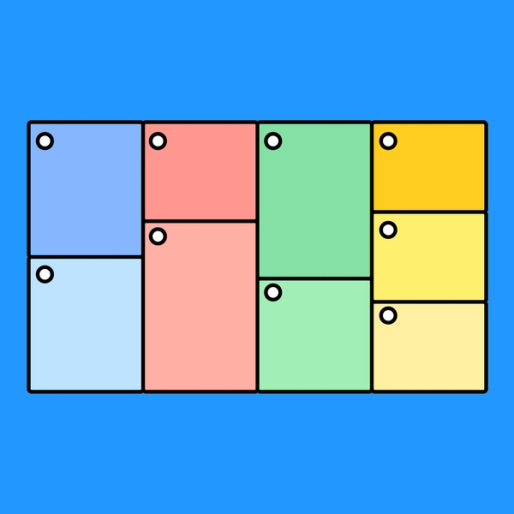
Research plan
Use this interactive template to collaborate with your team and create a top-notch strategic research plan that will uncover the answers you’re looking for.
Ready, set, plan!
Keep your team on track by agreeing on important aspects of your test and providing stakeholders with the why behind the what of your plan.
Identify important details: Define your research questions, goals, and methods from the onset to keep you focused throughout.
Set yourself up for success : Develop an outline that’ll keep you on track from start to finish.
Gather data: Create a plan that allows you to assemble and analyze the data you need to improve your users’ experience.

FigJam When the planning gets tough, the tough get planning
Work together to align your team’s ideas and goals for the ultimate research plan, complete with a clear objective, timeline, and other necessary components. Brainstorm and swap thoughts with ease, then use your insights to create a game plan that brings every research question to the real world.
Keep your eyes on the prize
With everyone on the same page—or plan—you can stay focused on a clear-cut outcome. Set your plan in motion, then use FigJam’s other templates to move forward into the next phase with ease.

User personas
Gain a better understanding of your target audience’s needs.

Stakeholder analysis
Identify and prioritize your stakeholders to ensure all participantsare satisfied.

Other templates from the community
Gather all the right tools to execute your plan and analyze your data.
What is a research plan?
A research plan example is a document that introduces your main question and how you intend to uncover the answer. They often include details like the surrounding context, objectives, methods, budget, timeline, and more to help you learn more about and eventually solve a customer’s pain point or an ineffective interface.
What are the contents of a research plan?
Research plans generally contain information such as:
Background information with general insights into what you already know, why you’re conducting the study, and what the problem is
The objective of your research and what you’re trying to accomplish
Research questions , both primary and secondary, to guide your experiment
The participants and recruitment methods to bring together a relevant, unbiased sample group
Your budget and timeline to plan around any logistical constraints
Intended results , describing what you hope to or anticipate finding
Out of scope elements that will not factor into your experiment
How to write a research plan?
Begin by gathering your team, downloading a shareable FigJam sample research plan, and brainstorming to figure out the issues you’re trying to understand and solve. With that information, you can narrow down your team’s top suggestions to one concrete objective. Then, decide on a few select research questions that will help you achieve your research goal.
As with any good scientific process, you’ll want to thoroughly interrogate and refine your questions using insight from your entire group, until you’re confident in your main question and research method. Don’t be afraid to solicit feedback, leave comments or suggestions, and move questions around—the flexibility is part of what makes FigJam’s market research plan template so valuable to any experiment.
Other templates you might like

Explore 1,000+ templates on the Figma community
Explore even more templates, widgets, and plugins—all built by the Figma community.


Home > Blog >
How to write a ux research plan that actually works: 7-step tutorial, saviour egbe, august 29, 2023.
A UX research plan is like a map that will help you navigate the complexity of running a research project. It will help you define your goals, choose the right methods, and collect the data you need to make informed design decisions.
But UX research plans don't have to be boring. In fact, they can be quite funny. For example, one UX researcher I know has a section in his plan called " The Things That Make Me Cry ." This is where he lists all the things that he's learned about his users that make him sad, such as the fact that they often have to deal with frustrating interfaces or unhelpful customer service.
But the primary use of a research plan of course is to make sure that your research is effective. So, while it’s helpful to have a sense of humor, you also need to be serious about your research.
In this article, we'll consider:
- What a UX research plan is and why it's important
- How to create a UX research plan
- An example of a well-structured UX research plan and
- A template for a UX research plan you can use to get started
So, whether you're a UX newbie or a seasoned pro, read on for everything you need to know about UX research plans!
What is a UX Research Plan?
A UX research plan is a document that outlines the goals, methods, and timeline for your research. It's a roadmap that will help you stay on track and ensure that your research is productive.
A good UX research plan should include the following:
- A clear statement of the research goals: What do you hope to learn from your research? What are the specific questions you're trying to answer?
- A description of the target audience: Who are the people you're designing for? What are their needs and pain points?
- A selection of research methods: There are many different research methods available, so it's important to choose the ones that are right for your goals and target audience.
- A timeline and budget: How long will your research take? How much money will it cost?
- A plan for data analysis and presentation: How will you analyze your data and communicate the findings to others?
Why is a UX Research Plan Important?
A UX research plan is important for several reasons. It helps you:
- Stay focused and avoids wasting time and resources.
- Ensures that your research is relevant to the needs of your users.
- Get buy-in from stakeholders & align on the goals for the project.
- Provides a framework for organizing and analyzing your data.
- Helps you communicate the findings of your research to others.
How to Create a UX Research Plan
Creating a UX research plan is an important step in ensuring that your product or service is user-friendly and meets the needs of your target audience. Here are the essential steps to create a research plan that drives meaningful insights and successful user experiences:
Step 1: Alignment & Requirements Gathering
Research rarely will happen in a vacuum. Usually you are working with a team—product, engineering, design, for example.
When the need for a research study arises, the first thing you want to do is meet with your team to understand the questions they're trying to answer.
Depending on how formally set up your research practice is, you may even want to supplement this step with a Research Request document where stakeholders can explain the key questions they'd like to answer, why they're important, and any constraints (budgets, timelines) they're working with.
Step 2: Define Your Goals
Once you've gathered your data, the next step is to clearly define & write out your goals. What do you hope to learn from your research? What specific questions are you trying to answer?
Here are some things to consider when framing your goals:
- What are the business objectives for your product or service? Are you trying to grow active users? Or reduce churn? What should the final results of this research project help you do?
- Who are your target users? These are the people you’d like to learn more about.
- What do you want to learn about their behavior and preferences? This will help you determine your research questions. Ideally the answers to these questions should also tie to your business goals so there’s a clear line between what you’re trying to learn and what that learning will do for the company.
Once you’ve thought about and drafted the answers to these questions, make sure to follow the below steps before starting interviews:
i. Assess Internal Data and Identify Research Needs
Before you start collecting new data, take some time to assess any existing data you have. This could include analytics, customer feedback, or previous research findings. This will help you identify any gaps in your knowledge and determine what areas need to be explored further.
Sometimes you’ll find you already have the answer to your research question in-house—saving you weeks of research effort and thousands of dollars of investment!
If you’re trying to build a repository to help you do this more effectively, check out this definitive guide on research repositories .
ii. Link Research Goals to Business Objectives
It's also important to link your research goals to the business objectives of your organization. This will help you justify the time and resources that will be required for your research. By demonstrating how your research will help you achieve your business goals, you'll be more likely to get the support you need.
As a bonus, once your research is complete, you can go back and track its impact against these business goals. This will help you build a case for your own work and the research practice at your company.
As you proceed through Step 1, keep in mind that your research goals should be Specific, Measurable, Achievable, Relevant, and Time-bound (SMART). This framework will help you ensure that your goals are well-defined and actionable.
Step 3: Identify Your Target Audience & Plan a Recruiting Strategy
Knowing your audience is essential for creating a UX research plan that delivers relevant and actionable insights. In this step, we'll talk about how to define your target audience and plan a recruiting strategy for this set of users.
The target audience you’re considering this research study may overlap with your standard target users, or you may want to speak with a subset of this group.
For instance, if you’re doing a research study on why users churn, speaking to a regular active user won’t help. You’ll need to define and recruit users who can actually answer your questions well—in this case it could be “users who have churned in the last 2 weeks”.
When defining the audience for this study, think about whether your target user falls in a specific category based on one of these characteristics:
- Demographics: This includes basic characteristics, such as age, gender, location, and occupation.
- Behaviors and habits: Are you interested in users who have or have not conducted certain actions on your product? For research on how well your Slack integration works, you may want to speak to users who have already installed it, for example.
- Needs and use cases: Sometimes one product can have multiple use cases. For example, a transcription product could be used by researchers, or journalists, or students trying to capture their class notes. Which use case or needs are relevant to your research study?
- Payment type: In today’s world products may have free, freemium / trial, or paid users and each of these groups may behave differently. Think about whether you need one or all of these user types as part of your research.
Now that you know who you need to reach, you also need to think about how to reach them.
Recruiting, as we all know, is a major pain point for (most) researchers. There are some ways to speed it up though.
If you’re running research for a B2C product or an easy to find B2B cohort, you may want to turn to an external recruiting software like UserInterview.com or Respondent.io. There are also local agencies to help you find more local audiences in international markets.
If you are trying to recruit via an external paid channel like this, make sure to budget it in your research plan. These channels are very quick to set up research calls with, but they do come with an added cost.
If you’re running research with a niche B2B audience or are defining your audience based on behaviour on your product (e.g., user who churned in the last 2 weeks), you may need to use internal recruiting methods. This means reaching out to your own users via email, intercom, or via your sales / support team.
If you are recruiting existing customers, make sure to budget in the time it takes to recruit these users. It may take a few days to weeks to gather the relevant user emails and schedule calls, although paid incentives for research help this move much faster.
If you are planning to recruit your own customers, use our Ultimate Guide to Recruiting Your Users for Interviews and Usability Tests . This article has templates for outreach, incentive payment options, and many tactical tips to help you streamline internal recruiting.
Remember, the accuracy and relevance of your research findings depend on the quality of your participants. Take the time to identify and engage users who genuinely reflect your intended audience. This will help you create a research plan that generates insights that drive impactful design decisions.
Step 4: Choose Your Research Methods
Choosing the right research methods is necessary for getting the most out of your UX research plan. Before kicking off your study, make sure to review the possible ways you can answer your research question as well as any constraints you face regarding time, money, or tooling.
If you’re not sure which methods exist, read through this article on UX Research Methods . This article provides an overview of the different methods, so you can choose the ones that are right for your project. It covers everything from usability testing to card sorting, and it includes practical advice on how to conduct each UX research method effectively.
When you’re actually selecting the right method out of the available options, here are the key questions you need to ask yourself:
- Your research goals: What do you hope to learn from your research? The methods you choose should be aligned with your specific goals. For example, if you need to deeply understand user motivations, a user interview is much better fit than a survey.
- Quantitative vs. qualitative: Do you want to collect quantitative data (numbers and statistics) or qualitative insights (in-depth understanding)? Different methods are better suited for different types of data. If you need to know the percentage of users using Zoom vs GoogleMeet, a 5-person user interview won’t get you that data but a 100 person survey with a representative sample might.
- Resources and time: How much time and money do you have to spend on your research? Some methods are more time-consuming or expensive than others. For instance, an ethnographic study where you travel to see your users is obviously more expensive and time-consuming than a 30-minute remote user interview.
By considering these factors, you can choose a combination of research methods that will help you understand your users better.
Step 5: Define your timelines & budgets
Now that you know your target audience (and therefore recruiting method) and your research methods, you can define the timelines and budgets your stakeholders care about.
- Timelines: How long will it take to conduct your research? This will depend on the methods you choose, the number of participants you need to recruit, and the amount of data you need to collect. For example, user interviews can typically be conducted within a few weeks, but usability testing can take anywhere from a few days to a few weeks, depending on the number of participants and the complexity of the product or service being tested.
- Budgets: How much money will you need to conduct your research? This will depend on the methods you choose, the number of participants you need to recruit, and the cost of data collection and analysis. For example, user interviews can be conducted for a few hundred dollars, but usability testing can cost several thousand dollars, depending on the number of participants and the complexity of the product or service being tested.
Step 6: Identify your assumptions
Sometimes without realising it, our research study comes packaged with a set of assumptions about who users are and what they want.
Before kicking off your study, it’s important to identify these assumptions in writing and align on them with your team.
For instance, if you’re running research on how to improve a Slack integration, your in-built assumptions may be:
- Users already use this integration
- It’s worth improving this integration further
Once you’ve laid out these assumptions in advance of your research, you can check them against existing data and keep them in mind when you’re reviewing your research findings.
For example, if analytics data shows that no users use your Slack integration, it may call into question the research you’re running today or change the audience you speak to about it.
Instead of speaking to existing Slack integration users, your audience may need to be companies that have Slack but have not downloaded your Slack integration.
Your research questions may also shift from “Why do you use the Slack integration?” to “Why not? ”
In general, taking a moment to review research assumptions helps you be more aware of them throughout your research study.
Step 7: Define the research questions
This is a pivotal phase in the UX research process. It's when you define the questions that will guide your data collection efforts. These questions will be your compass, directing your research toward meaningful insights that drive product improvements.
Here are some tips for crafting and structuring your research questions:
- Make sure each question is aligned with your overall research objectives. This will ensure that your findings address the core goals of your project.
- Make your questions clear, concise, and specific. Ambiguity can lead to varied interpretations and muddy insights.
- Frame your questions from the user's perspective. Use language that aligns with your target audience to ensure your questions are relatable.
- Avoid leading questions. These are questions that nudge participants towards a particular response. Aim for neutrality to get real insights.
- Use a mix of open-ended and closed-ended questions. Open-ended questions allow participants to provide detailed responses, while closed-ended questions offer predefined answer choices.
- Structure your questions logically, moving from broader inquiries to more specific ones. This will help participants to follow your thought process.
- Limit the number of questions. You want to get comprehensive insights but don't want to overwhelm participants with too many questions.
- Cover the core areas relevant to your project. This could include user pain points, needs, preferences, expectations, and perceptions.
- Pilot-test your questions with a small group of participants. Their feedback can help you to identify unclear or misleading questions.
- Make sure your questions are relevant to the research methods you will be using. For example, usability testing may focus on task-oriented questions, while interviews explore broader experiences.
Here are some examples of well-defined research questions:
1. Usability testing:
- How easily can users navigate the Looppanel account setup process?
- What challenges do users face when uploading their recorded calls to Looppanel?
- How intuitive is the process of setting up Calendar integration on Looppanel?
2. Interviews:
- Can you describe a recent experience you had with the Looppanel customer support?
- What motivated you to sign up for Looppanel for your user research needs instead of other platforms?
- In your view, how does the platform assist in taking your user interview notes effectively?
By carefully defining your research questions, you can ensure that your data collection efforts are focused and meaningful. This will help you to gather the insights you need to improve your product or service and deliver a better experience to your users.
Step 8: Align with your team
Now that you’ve thought through the basics, it's essential to get buy-in from your team and stakeholders on the final plan.
A lot may have happened between your first requirement-gathering meeting and when your plan is finalized. Take the final plan to stakeholders and make sure they are aligned:
- The research question you’re going to answer
- How your study ties to business goals
- Which users you’ll be engaging with
- Which method you’ll be using
- What your timelines look like
- What your budget looks like (if applicable)
This step is really important because if there’s a lack of alignment between you and your key stakeholder, you may end up with findings nobody is going to act on.
Example UX Research Plan
Here is an example UX research plan for improving the onboarding experience of a mobile app. Use this example as a guide to help you create your own plan!
Psst… we also have a template below that you can copy and use!
Project Title: Research study to improve onboarding experience on DuoLingo
Business Goal: We want to increase the activation rate of new users on the app.
Project Goal(s) :
- Identify key drop-off points on the onboarding flow
- Identify why users are dropping off at these points
Target Users: People from the 15-40 age group in North America who have not used Duolingo before.
- MixPanel analytics data to identify existing drop-off points for users
- Usability testing with the think aloud protocol to understand why users are dropping off at those points
Timelines: The study will run for 4 weeks:
- Week 1: Analyzing existing analytics data & recruiting participants
- Week 2: Running usability tests
- Week 3: Analyzing results
- Week 4: Presenting findings
Budget (if applicable): Anticipated spend of $500 on recruiting.
Key Research Questions These are the research questions we’ll be gathering data on :
- At which point(s) in the onboarding process are users most likely to drop off?
- What are the common reasons users cite for discontinuing the onboarding process?
- How do users perceive the clarity of instructions during the initial setup stages?
- Are there any specific usability issues that lead users to abandon the onboarding flow?
- How do users' prior experiences with language learning apps impact their expectations of DuoLingo's onboarding?
UX Research plan template

We’ve also created a UX Research plan template you can use easily duplicate and use for your own work.
Click here to get Looppanel's UX Research Plan template.
This template contains sections for:
- Project Title
- Business Goals
- Project Goals
- Target Users
- Research Methods
- Timelines & Budgets
- Key Research Questions
Follow us on
Get the best resources for ux research, in your inbox, related articles.

Resources & Guides
April 21, 2023
15 Best UX Research Tools for User Researchers - 2024

August 1, 2023
How to Choose the Right UX Research Method

November 8, 2022
A Definitive Guide to the UX Research Repository [2024]
Looppanel automatically records your calls, transcribes them, and centralizes all your research data in one place

UX Research Plan Template
Create a strong business case for UX research and streamline your process with the UX research plan template.
Trusted by 65M+ users and leading companies
About the UX Research Plan Template
A UX research plan, also known as a user research plan, is a brief reference document that outlines your research project’s goals, key contributors, important dates, and timelines.
Think of your research plan as a UX-focused kick-off document for your project. The plan offers an overview of the research initiative, encourages well-defined and agreed-upon goals, and acts as a written guarantee that the research will meet these goals.
What is a UX research plan?
When conducting usability testing or user research with a goal in mind, researchers need to plan. UX researchers often present their findings to stakeholders, like product managers, developers, marketers, and executives, to act on those results.
You should present your UX research plan in plain language with a single document. Keep your findings clear, collaborative, easily accessed, and digestible to get buy-in for your research and your team’s next steps.
A user research plan typically has up to seven segments:
Project background: Reasons for the study and internal stakeholders involved.
Research goals and objectives: What your teams want to learn, or their ideal research outcome.
Research participants: Who they are and how they’ll be recruited.
Method: How you conducted research, and any other information about how the research will be conducted.
Guides: An interview guide or cheat sheet of instructions and questions to follow during the session.
Duration: A rough timeline of how long the research will take and when the team can review the report.
Other helpful information: Additional resources for your team, such as previous studies, scripts, or results, can inform this new round of research.
Research plans keep your team focused on outcomes rather than getting lost in the details or changing the research goal midway through the project. By the end of the project, UX researchers should feel confident that their questions were answered and presented in both the plan and actual research.
When to use UX research plans
UX research plans are useful for teams who need to decide on questions such as:
What do our customers need? Who is our target persona?
Does the proposed or current design work well for our customers? How can we make it better?
Planning UX research also gives researchers an opportunity to:
Decide what works for your stakeholders, especially the questions they’re trying to answer.
Engage stakeholders and keep them invested in your research results.
Clarify your ideas, problems to be solved, and research approaches.
Treat your research plan as a blueprint for aligning expectations, asking for feedback, or generating enthusiasm and support for increasing the value of user research in your organization.
Create your own UX research plan template
Making your own UX research plans is easy, and Miro is the perfect tool to create and share them. Get started by selecting the UX research plan template, then take the following steps to make one of your own.
Give your team or stakeholders a quick project introduction. You can hop on a video chat with up to 25 team members and remind everyone what you’re trying to achieve. Remember that research proves its value when it satisfies a single objective rather than many. If you seem to have lots of different goals or objectives, avoid overreaching and start fresh: what’s the one customer problem and business problem you’re trying to solve?
Define the user and business problems your research needs to solve. The default sticky notes are simply for inspiration — feel free to edit each of these to fix your own context. If you want your team to focus on this area instead of skipping ahead, you can select the “problem” frame and click the “hide frame” (closed eye) icon that appears in the frame’s menu.
Define your research goals. Ask your team to brainstorm their top three research goals or priorities. Remember that the best research sessions are chasing a single objective, so out of the two to three you note down, ask your team to vote for their preferences. Try Miro’s Voting Plugin to help your team reach a decision.
Draft your research questions. Pick three to five questions with your team or stakeholders that are most important to your research. Aim for no more than 10. The more focused your questions, the more focused your research will be.
Link to useful supporting information as needed. Keep this plan to the point in order to get buy-in. For stakeholders who need more detail, there may be other useful data to link to. If you have previous UX research results or relevant studies, link to them on your Miro Board. You can also import survey data, embed tables and charts , or link sticky notes to external sources .
Dive even deeper into how to conduct UX research – and see examples – in our expert guide to user research .
Why should you use the UX Research Template?
Centralized planning: Centralize your UX research plans in one shared space. This ensures that all relevant information, including research objectives, methodologies, and timelines, is easily accessible in one place, reducing the risk of scattered or lost documentation.
Collaborative research: Multiple stakeholders, including designers, researchers, and product managers, can collaborate on your UX research plan template simultaneously, fostering a more inclusive and collaborative approach to research planning.
Visual representation of research steps: Create diagrams, flowcharts, and visual representations of the research process. This visual mapping helps teams better understand the sequence of research activities, identify dependencies, and effectively communicate the overall research strategy.
Iterative refinement: Provide feedback, comments, and suggestions directly on the UX research plan template. Promote continuous improvement, allowing the team to refine the research plan based on insights and changing project requirements.
Integration with user flows and personas: Integrate with other templates, such as user flows and persona maps. By connecting these elements, teams can create a holistic view of the user experience journey. This integration helps align research activities with the overall UX strategy and ensures a more cohesive and user-centric product design.
How can I ensure that a UX Research Plan remains effective?
Regularly review and update the research plan as project requirements evolve. It's crucial to stay flexible and adapt the plan based on the findings and changing project needs.
Get started with this template right now.
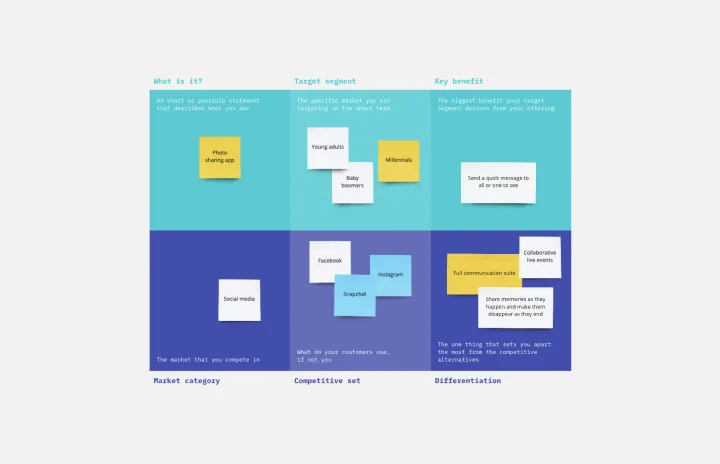
Product Positioning Template
Works best for:.
Marketing, Product Management, Desk Research
For better or for worse, your company’s chances for success hinge partially on your market. As such, before you start building products and planning strategies, it’s a good idea to conduct a product positioning exercise. A product positioning exercise is designed to situate your company and your offering within a market. The product positioning template guides you to consider key topics such as defining your product and market category, identifying your target segment and competitors, and understanding your key benefits and differentiation.
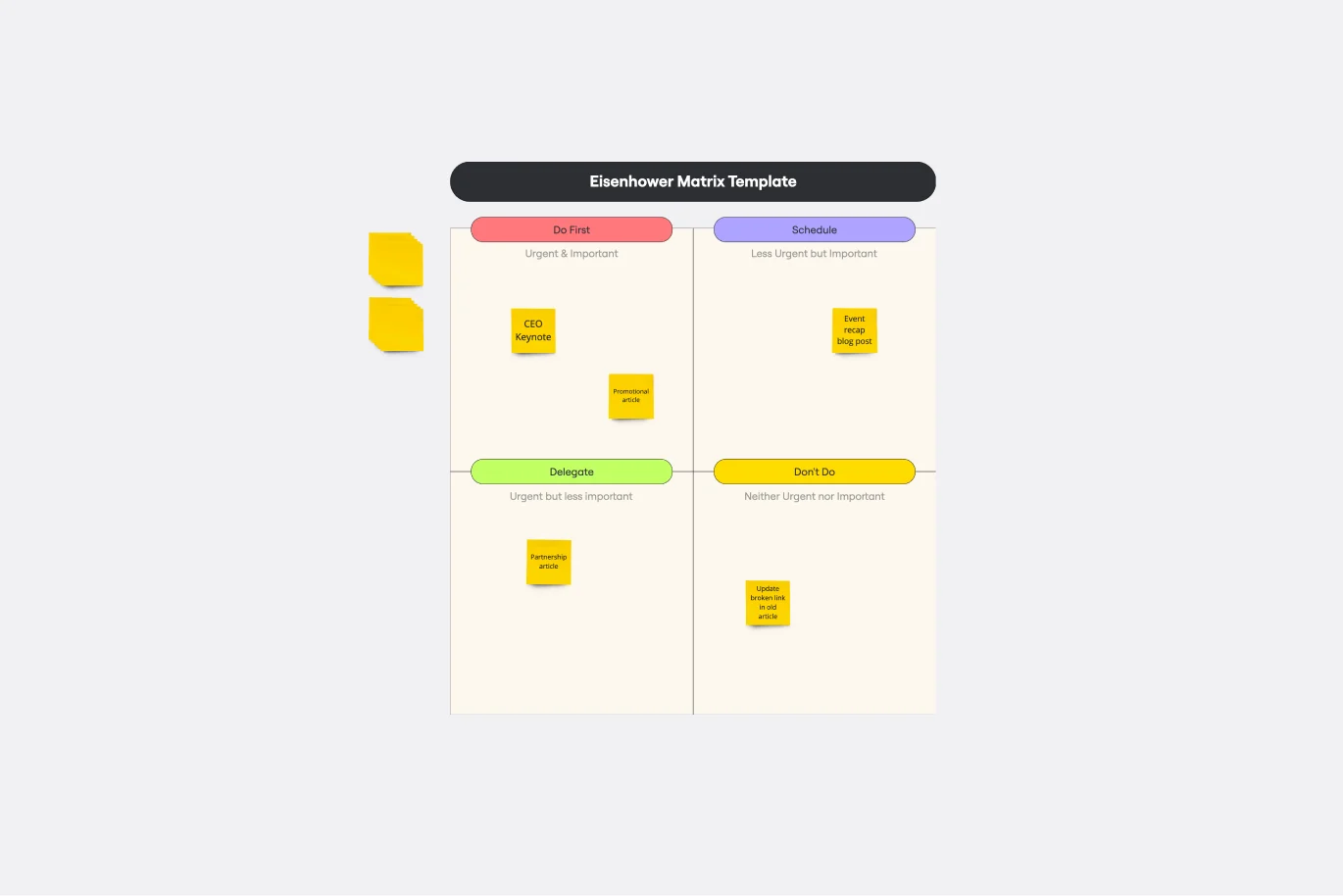
Eisenhower Matrix Template
Leadership, Strategic Planning, Prioritization
Have an overwhelming list of to-dos? Prioritize them based on two key factors: urgency and importance. It worked for American president Dwight D. Eisenhower, and it can work for you—this decision-making framework will help you know where to start and how to plan your day. With our template, you can easily build an Eisenhower Matrix with a quadrant of key areas (Do, Schedule, Delegate, and Don’t Do) and revisit it throughout the day as your priorities change.
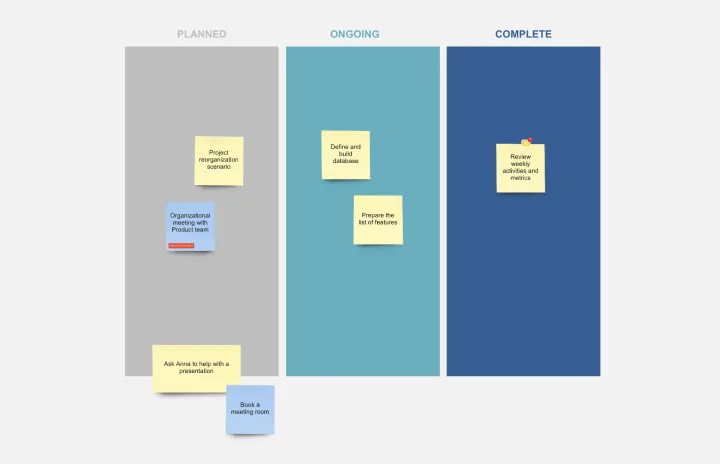
Product Backlog Template
Agile Methodology, Kanban Boards, Product Management
Development teams are often juggling many products at once. A product backlog is a project management tool that helps teams keep track of projects in flight as they build and iterate, so you can store everyone's ideas, plan epics, and prioritize tasks. The highest-priority tasks are at the top of the product backlog, so your team knows what to work on first. Product backlogs make it easier for teams to plan and allocate resources, but it also provides a single source of truth for everyone to know what development teams are working on.
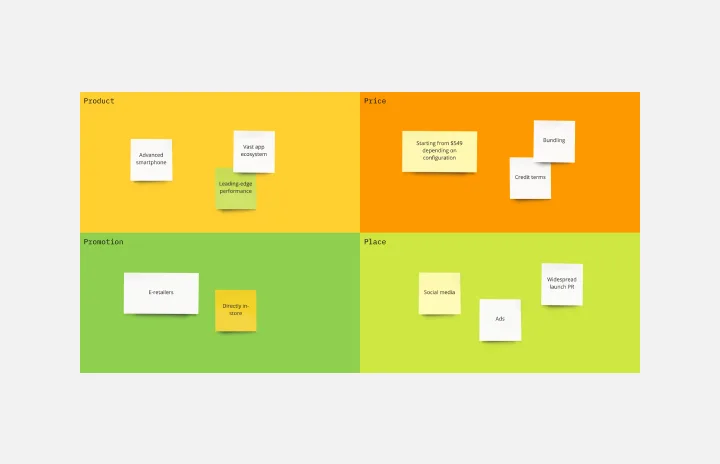
4P Marketing Mix Template
Marketing, Brainstorming, Workshops
Product, Place, Promotions, and Price. Starting with this template (and those 4Ps) you can choose the best way to take your product or service to market. The secret is to create just the right mix—deciding how much each P needs in terms of investment, attention, and resources. That will help you build your strengths, adapt to the market, and collaborate with partners. And our tool is the perfect canvas to create your marketing mix and share with teams and across your organization.
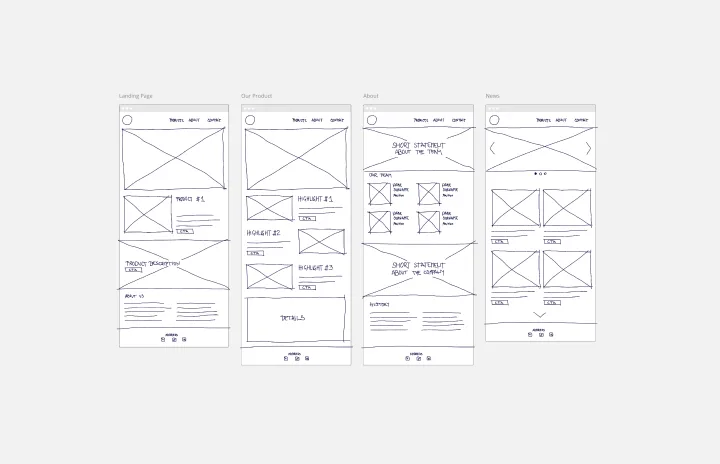
Low-fidelity Wireframes Template
Desk Research, Product Management, Wireframes
When you’re designing a site or building an app, the early stages should be BIG — seeing the big picture and communicating the big idea. Low fidelity wireframes empower you to see it and do it. These rough layouts (think of them as the digital version of a sketch on a napkin) help your teams and project stakeholders quickly determine if a design meeting meets your users’ needs. Our template lets you easily use wireframes during meetings or workshops, presentations, and critique sessions.
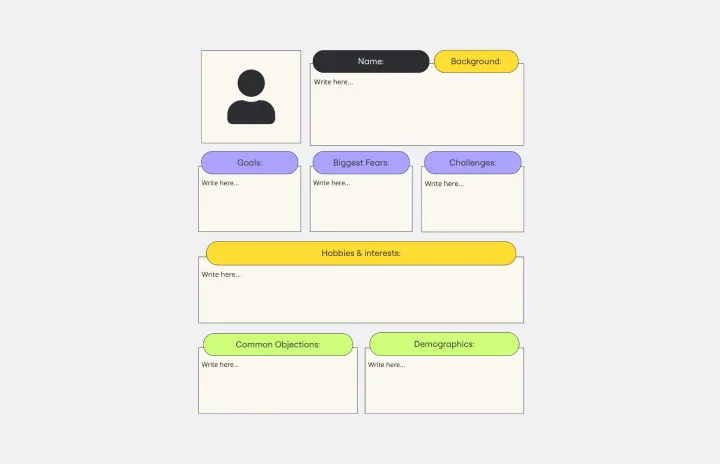
Audience Persona Template
Research, UX, Design, Product, Marketing
The Audience Persona Template is an essential tool that helps gain valuable insights into the target demographic. It ensures that every strategic decision is tailored to meet the specific needs and preferences of the audience. The template is designed to cover areas like Background, Hobbies and Interests, Goals, Biggest Fears, Challenges, Common Objections, and Demographics. This detailed approach enables the creation of a nuanced and multi-dimensional audience profile. By understanding the basic demographic information and the target audience's deeper motivations, challenges, and apprehensions, teams can develop more empathetic, effective, and targeted strategies. This depth of understanding leads to more resonant and successful product developments, marketing campaigns, and customer engagement initiatives.
32+ SAMPLE Research Study Plan in PDF

Research Study Plan
32+ sample research study plan, what is a research study plan, different types of research study plans, basic components of a research study plan , how to write a research study plan, what are the benefits of a research study plan, what are the key components of a research study plan, what are some examples of research study plans, how to manage and monitor a research study plan.

Quantitative Research Study Plan

Research And Theory Study Plan
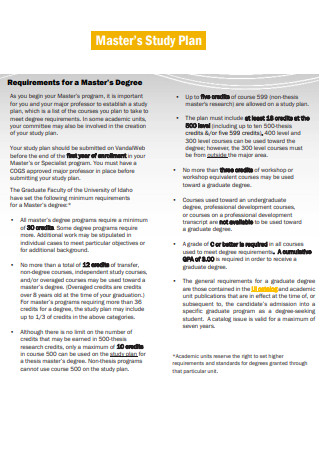
Master’s Research Study Plan
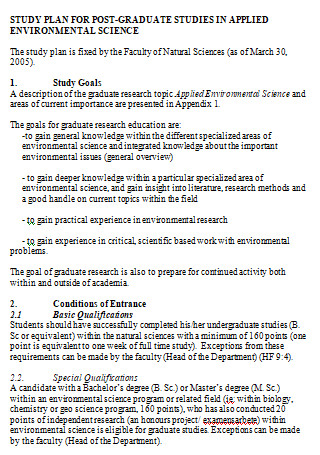
Thesis Research Study Plan Form
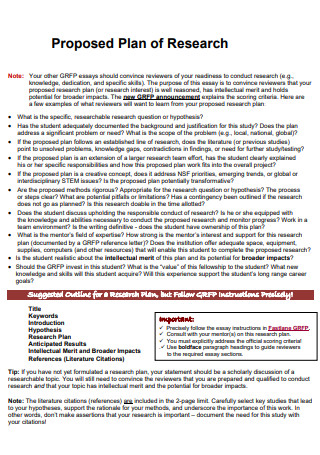
Research Study Proposed Plan
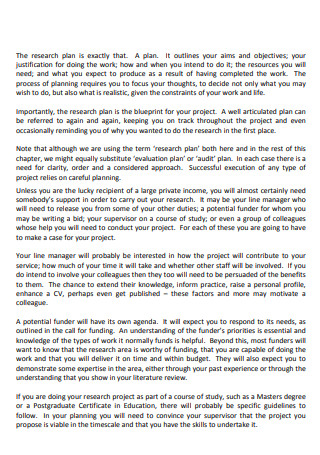
Educational Research Study Plan
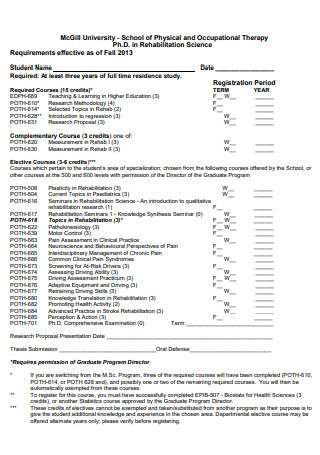
Research Study Plan Form
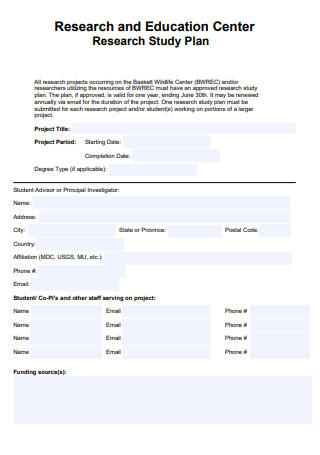
Research and Education Center Study Plan
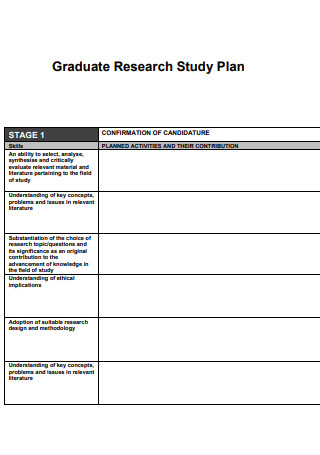
Graduate Research Study Plan


General Research Study Plan

Study Plan for Doctoral Studies
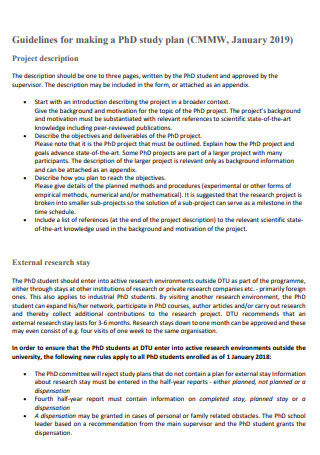
External Research Study Plan
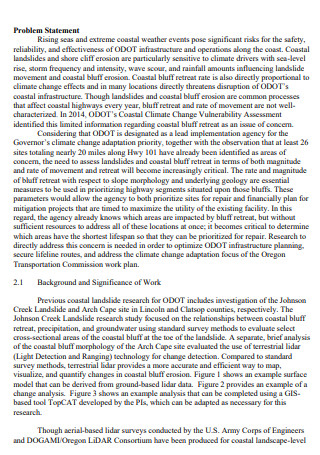
Research Project Study Plan
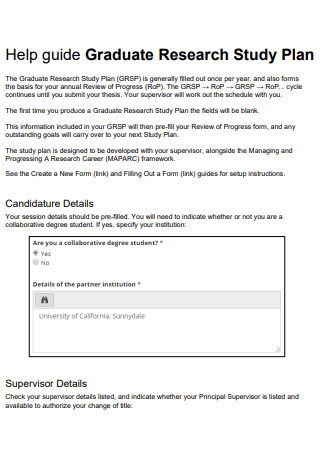
Online Graduate Research Study Plan
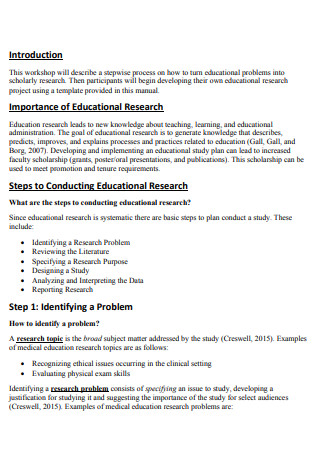
Steps for Educational Research Study Plan
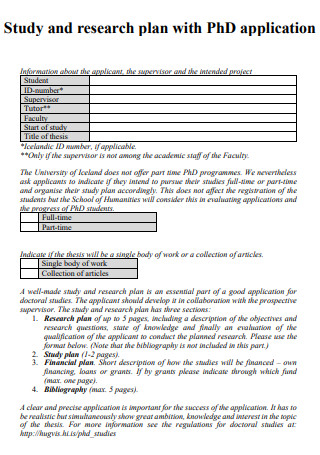
Research Study Plan with PhD

Preliminary Research Study Plan
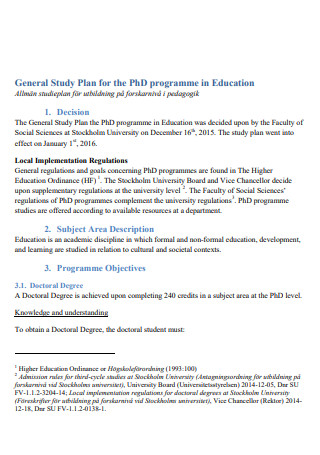
General Study Plan for the PhD
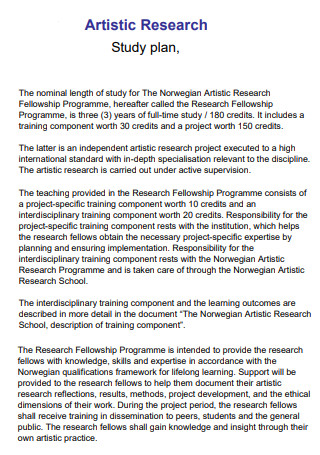
Artistic Research Study Plan

Final Research Study Plan
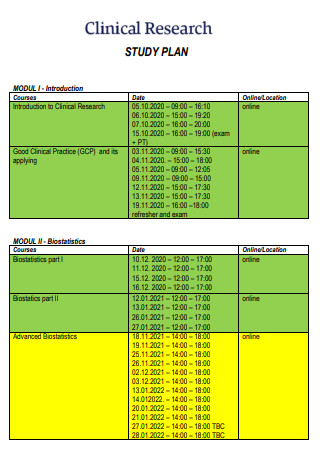
Clinical Research Study Plan

Sample Research Study Plan
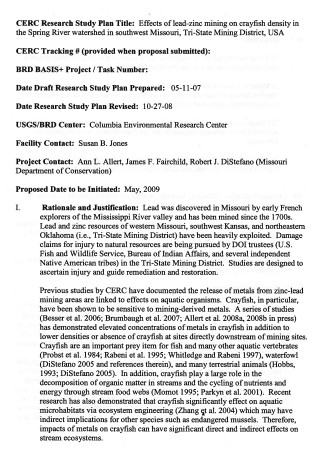
Draft Research Study Plan

Research Study Scheme Plan
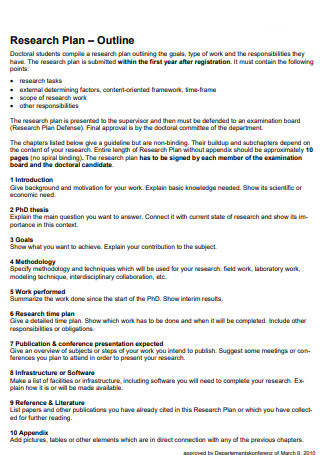
Research Study Plan Outline
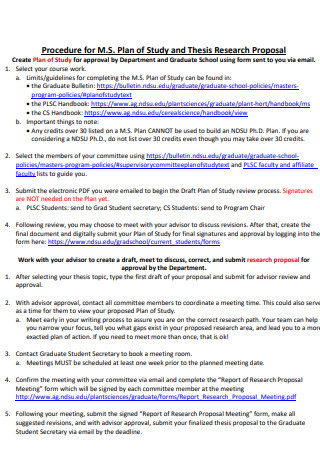
Thesis Research Study Plan
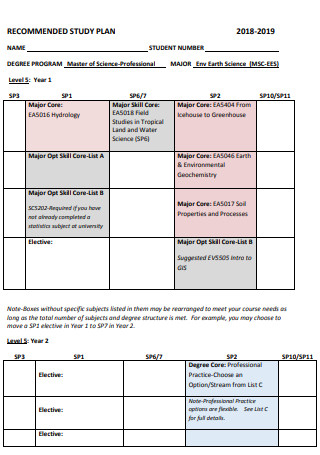
Simple Research Study Plan
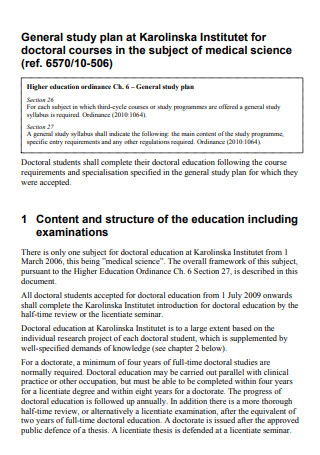
Medical Research Study Plan
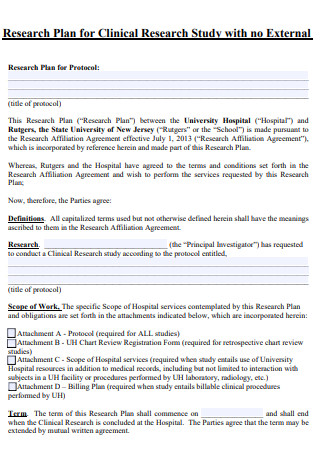
Clinical Research Study Plan Protocol
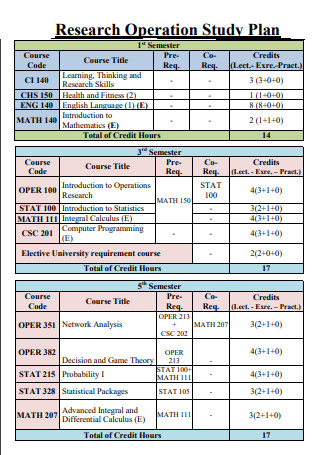
Research Operation Study Plan
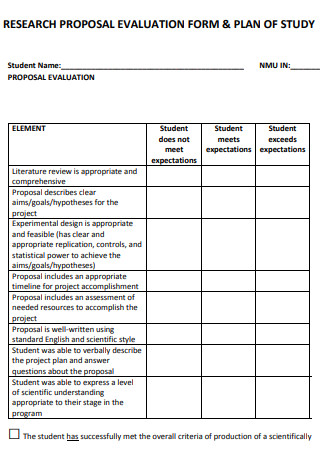
Research Study Plan And Evaluation Proposal

Food Science Research Study Plan
1. artistic research study plan, 2. clinical research study plan, 3. educational research study plan, 4. food science research study plan, step 1: define project scope, research question and specific goals, step 2: perform a comprehensive literature review, step 3: establish a research timeline and progress tracking, step 4: select a research design and develop a review of the research methods, step 5: proofread and prepare the overall plan, share this post on your network, file formats, word templates, google docs templates, excel templates, powerpoint templates, google sheets templates, google slides templates, pdf templates, publisher templates, psd templates, indesign templates, illustrator templates, pages templates, keynote templates, numbers templates, outlook templates, you may also like these articles, 5+ sample investment company business plan in pdf.

What do you do when you have tons of spare cash lying around your home or burning a hole in your wallet or expensive jeans pocket? For some people, the…
41+ SAMPLE Unit Plan Templates in PDF | MS Word

As a teacher, you might know about every school policy, the steps to keep classrooms safe for intellectual development, how to set up an organized classroom, and the proposed…
browse by categories
- Questionnaire
- Description
- Reconciliation
- Certificate
- Spreadsheet
Information
- privacy policy
- Terms & Conditions
Have a language expert improve your writing
Run a free plagiarism check in 10 minutes, generate accurate citations for free.
- Knowledge Base
Methodology
- What Is a Research Design | Types, Guide & Examples
What Is a Research Design | Types, Guide & Examples
Published on June 7, 2021 by Shona McCombes . Revised on November 20, 2023 by Pritha Bhandari.
A research design is a strategy for answering your research question using empirical data. Creating a research design means making decisions about:
- Your overall research objectives and approach
- Whether you’ll rely on primary research or secondary research
- Your sampling methods or criteria for selecting subjects
- Your data collection methods
- The procedures you’ll follow to collect data
- Your data analysis methods
A well-planned research design helps ensure that your methods match your research objectives and that you use the right kind of analysis for your data.
Table of contents
Step 1: consider your aims and approach, step 2: choose a type of research design, step 3: identify your population and sampling method, step 4: choose your data collection methods, step 5: plan your data collection procedures, step 6: decide on your data analysis strategies, other interesting articles, frequently asked questions about research design.
- Introduction
Before you can start designing your research, you should already have a clear idea of the research question you want to investigate.
There are many different ways you could go about answering this question. Your research design choices should be driven by your aims and priorities—start by thinking carefully about what you want to achieve.
The first choice you need to make is whether you’ll take a qualitative or quantitative approach.
Qualitative research designs tend to be more flexible and inductive , allowing you to adjust your approach based on what you find throughout the research process.
Quantitative research designs tend to be more fixed and deductive , with variables and hypotheses clearly defined in advance of data collection.
It’s also possible to use a mixed-methods design that integrates aspects of both approaches. By combining qualitative and quantitative insights, you can gain a more complete picture of the problem you’re studying and strengthen the credibility of your conclusions.
Practical and ethical considerations when designing research
As well as scientific considerations, you need to think practically when designing your research. If your research involves people or animals, you also need to consider research ethics .
- How much time do you have to collect data and write up the research?
- Will you be able to gain access to the data you need (e.g., by travelling to a specific location or contacting specific people)?
- Do you have the necessary research skills (e.g., statistical analysis or interview techniques)?
- Will you need ethical approval ?
At each stage of the research design process, make sure that your choices are practically feasible.
Here's why students love Scribbr's proofreading services
Discover proofreading & editing
Within both qualitative and quantitative approaches, there are several types of research design to choose from. Each type provides a framework for the overall shape of your research.
Types of quantitative research designs
Quantitative designs can be split into four main types.
- Experimental and quasi-experimental designs allow you to test cause-and-effect relationships
- Descriptive and correlational designs allow you to measure variables and describe relationships between them.
With descriptive and correlational designs, you can get a clear picture of characteristics, trends and relationships as they exist in the real world. However, you can’t draw conclusions about cause and effect (because correlation doesn’t imply causation ).
Experiments are the strongest way to test cause-and-effect relationships without the risk of other variables influencing the results. However, their controlled conditions may not always reflect how things work in the real world. They’re often also more difficult and expensive to implement.
Types of qualitative research designs
Qualitative designs are less strictly defined. This approach is about gaining a rich, detailed understanding of a specific context or phenomenon, and you can often be more creative and flexible in designing your research.
The table below shows some common types of qualitative design. They often have similar approaches in terms of data collection, but focus on different aspects when analyzing the data.
Your research design should clearly define who or what your research will focus on, and how you’ll go about choosing your participants or subjects.
In research, a population is the entire group that you want to draw conclusions about, while a sample is the smaller group of individuals you’ll actually collect data from.
Defining the population
A population can be made up of anything you want to study—plants, animals, organizations, texts, countries, etc. In the social sciences, it most often refers to a group of people.
For example, will you focus on people from a specific demographic, region or background? Are you interested in people with a certain job or medical condition, or users of a particular product?
The more precisely you define your population, the easier it will be to gather a representative sample.
- Sampling methods
Even with a narrowly defined population, it’s rarely possible to collect data from every individual. Instead, you’ll collect data from a sample.
To select a sample, there are two main approaches: probability sampling and non-probability sampling . The sampling method you use affects how confidently you can generalize your results to the population as a whole.
Probability sampling is the most statistically valid option, but it’s often difficult to achieve unless you’re dealing with a very small and accessible population.
For practical reasons, many studies use non-probability sampling, but it’s important to be aware of the limitations and carefully consider potential biases. You should always make an effort to gather a sample that’s as representative as possible of the population.
Case selection in qualitative research
In some types of qualitative designs, sampling may not be relevant.
For example, in an ethnography or a case study , your aim is to deeply understand a specific context, not to generalize to a population. Instead of sampling, you may simply aim to collect as much data as possible about the context you are studying.
In these types of design, you still have to carefully consider your choice of case or community. You should have a clear rationale for why this particular case is suitable for answering your research question .
For example, you might choose a case study that reveals an unusual or neglected aspect of your research problem, or you might choose several very similar or very different cases in order to compare them.
Data collection methods are ways of directly measuring variables and gathering information. They allow you to gain first-hand knowledge and original insights into your research problem.
You can choose just one data collection method, or use several methods in the same study.
Survey methods
Surveys allow you to collect data about opinions, behaviors, experiences, and characteristics by asking people directly. There are two main survey methods to choose from: questionnaires and interviews .
Observation methods
Observational studies allow you to collect data unobtrusively, observing characteristics, behaviors or social interactions without relying on self-reporting.
Observations may be conducted in real time, taking notes as you observe, or you might make audiovisual recordings for later analysis. They can be qualitative or quantitative.
Other methods of data collection
There are many other ways you might collect data depending on your field and topic.
If you’re not sure which methods will work best for your research design, try reading some papers in your field to see what kinds of data collection methods they used.
Secondary data
If you don’t have the time or resources to collect data from the population you’re interested in, you can also choose to use secondary data that other researchers already collected—for example, datasets from government surveys or previous studies on your topic.
With this raw data, you can do your own analysis to answer new research questions that weren’t addressed by the original study.
Using secondary data can expand the scope of your research, as you may be able to access much larger and more varied samples than you could collect yourself.
However, it also means you don’t have any control over which variables to measure or how to measure them, so the conclusions you can draw may be limited.
Prevent plagiarism. Run a free check.
As well as deciding on your methods, you need to plan exactly how you’ll use these methods to collect data that’s consistent, accurate, and unbiased.
Planning systematic procedures is especially important in quantitative research, where you need to precisely define your variables and ensure your measurements are high in reliability and validity.
Operationalization
Some variables, like height or age, are easily measured. But often you’ll be dealing with more abstract concepts, like satisfaction, anxiety, or competence. Operationalization means turning these fuzzy ideas into measurable indicators.
If you’re using observations , which events or actions will you count?
If you’re using surveys , which questions will you ask and what range of responses will be offered?
You may also choose to use or adapt existing materials designed to measure the concept you’re interested in—for example, questionnaires or inventories whose reliability and validity has already been established.
Reliability and validity
Reliability means your results can be consistently reproduced, while validity means that you’re actually measuring the concept you’re interested in.
For valid and reliable results, your measurement materials should be thoroughly researched and carefully designed. Plan your procedures to make sure you carry out the same steps in the same way for each participant.
If you’re developing a new questionnaire or other instrument to measure a specific concept, running a pilot study allows you to check its validity and reliability in advance.
Sampling procedures
As well as choosing an appropriate sampling method , you need a concrete plan for how you’ll actually contact and recruit your selected sample.
That means making decisions about things like:
- How many participants do you need for an adequate sample size?
- What inclusion and exclusion criteria will you use to identify eligible participants?
- How will you contact your sample—by mail, online, by phone, or in person?
If you’re using a probability sampling method , it’s important that everyone who is randomly selected actually participates in the study. How will you ensure a high response rate?
If you’re using a non-probability method , how will you avoid research bias and ensure a representative sample?
Data management
It’s also important to create a data management plan for organizing and storing your data.
Will you need to transcribe interviews or perform data entry for observations? You should anonymize and safeguard any sensitive data, and make sure it’s backed up regularly.
Keeping your data well-organized will save time when it comes to analyzing it. It can also help other researchers validate and add to your findings (high replicability ).
On its own, raw data can’t answer your research question. The last step of designing your research is planning how you’ll analyze the data.
Quantitative data analysis
In quantitative research, you’ll most likely use some form of statistical analysis . With statistics, you can summarize your sample data, make estimates, and test hypotheses.
Using descriptive statistics , you can summarize your sample data in terms of:
- The distribution of the data (e.g., the frequency of each score on a test)
- The central tendency of the data (e.g., the mean to describe the average score)
- The variability of the data (e.g., the standard deviation to describe how spread out the scores are)
The specific calculations you can do depend on the level of measurement of your variables.
Using inferential statistics , you can:
- Make estimates about the population based on your sample data.
- Test hypotheses about a relationship between variables.
Regression and correlation tests look for associations between two or more variables, while comparison tests (such as t tests and ANOVAs ) look for differences in the outcomes of different groups.
Your choice of statistical test depends on various aspects of your research design, including the types of variables you’re dealing with and the distribution of your data.
Qualitative data analysis
In qualitative research, your data will usually be very dense with information and ideas. Instead of summing it up in numbers, you’ll need to comb through the data in detail, interpret its meanings, identify patterns, and extract the parts that are most relevant to your research question.
Two of the most common approaches to doing this are thematic analysis and discourse analysis .
There are many other ways of analyzing qualitative data depending on the aims of your research. To get a sense of potential approaches, try reading some qualitative research papers in your field.
If you want to know more about the research process , methodology , research bias , or statistics , make sure to check out some of our other articles with explanations and examples.
- Simple random sampling
- Stratified sampling
- Cluster sampling
- Likert scales
- Reproducibility
Statistics
- Null hypothesis
- Statistical power
- Probability distribution
- Effect size
- Poisson distribution
Research bias
- Optimism bias
- Cognitive bias
- Implicit bias
- Hawthorne effect
- Anchoring bias
- Explicit bias
A research design is a strategy for answering your research question . It defines your overall approach and determines how you will collect and analyze data.
A well-planned research design helps ensure that your methods match your research aims, that you collect high-quality data, and that you use the right kind of analysis to answer your questions, utilizing credible sources . This allows you to draw valid , trustworthy conclusions.
Quantitative research designs can be divided into two main categories:
- Correlational and descriptive designs are used to investigate characteristics, averages, trends, and associations between variables.
- Experimental and quasi-experimental designs are used to test causal relationships .
Qualitative research designs tend to be more flexible. Common types of qualitative design include case study , ethnography , and grounded theory designs.
The priorities of a research design can vary depending on the field, but you usually have to specify:
- Your research questions and/or hypotheses
- Your overall approach (e.g., qualitative or quantitative )
- The type of design you’re using (e.g., a survey , experiment , or case study )
- Your data collection methods (e.g., questionnaires , observations)
- Your data collection procedures (e.g., operationalization , timing and data management)
- Your data analysis methods (e.g., statistical tests or thematic analysis )
A sample is a subset of individuals from a larger population . Sampling means selecting the group that you will actually collect data from in your research. For example, if you are researching the opinions of students in your university, you could survey a sample of 100 students.
In statistics, sampling allows you to test a hypothesis about the characteristics of a population.
Operationalization means turning abstract conceptual ideas into measurable observations.
For example, the concept of social anxiety isn’t directly observable, but it can be operationally defined in terms of self-rating scores, behavioral avoidance of crowded places, or physical anxiety symptoms in social situations.
Before collecting data , it’s important to consider how you will operationalize the variables that you want to measure.
A research project is an academic, scientific, or professional undertaking to answer a research question . Research projects can take many forms, such as qualitative or quantitative , descriptive , longitudinal , experimental , or correlational . What kind of research approach you choose will depend on your topic.
Cite this Scribbr article
If you want to cite this source, you can copy and paste the citation or click the “Cite this Scribbr article” button to automatically add the citation to our free Citation Generator.
McCombes, S. (2023, November 20). What Is a Research Design | Types, Guide & Examples. Scribbr. Retrieved April 15, 2024, from https://www.scribbr.com/methodology/research-design/
Is this article helpful?
Shona McCombes
Other students also liked, guide to experimental design | overview, steps, & examples, how to write a research proposal | examples & templates, ethical considerations in research | types & examples, what is your plagiarism score.
Filter by Keywords
10 Free Research Plan Templates for Teams and Professionals
February 13, 2024
Starting a new research project from scratch can feel overwhelming. Without the right tools and templates, you’re left with a blank page and no direction. With them, starting a new project or organizing an existing one feels like a breeze.
That’s why you need to build a library of the best research plan templates. And we’re here to help you do it.
Stick with us as we run through the benefits of using a research plan template and share some of our favorites—all designed to help make your research projects run like magic.
What is a Research Plan Template?
What makes a good research plan template, 1. clickup user research plan template, 2. clickup market research template, 3. clickup research whiteboard template, 4. clickup equity research report template, 5. clickup seo research & management template, 6. clickup research report template, 7. clickup data analysis findings template, 8. clickup personal swot analysis template, 9. clickup case study template, 10. clickup investigation report template, how to write a research plan.
A research plan template is a document that’s designed to help you build the best research management plan possible. Instead of starting from scratch with a blank screen, a research plan document gives you the building blocks to fill in—so you won’t miss anything important.
There are a lot of solid research plan documents out there—covering everything from UX research (user experience) to case study templates . These templates can be helpful for any team, whether you’re working on product development prototypes or research objectives for a marketing project. They’re especially helpful for product design , UX research, and project management teams.
Some of the most popular research plan templates include:
- UX research plan templates
- Usability testing research templates
- Data analysis findings templates
- Project proposal templates
- Case study templates
- Research process templates
- Market research templates
- Competitive analysis templates
- Request for proposal templates
Each is there to guide you towards collecting, reviewing, and reporting on your research in a more strategic and organized way. Think of the research plan as your helpful research buddy—there to make things easier, provide guidance, and help you ace your project execution .
We’re all looking for something different when it comes to project templates. You might favor simplicity and order, while another team might prefer a more creative approach with lots of color and prompts.
Even though your needs are unique, there are some elements that almost always make a research plan template stand out above all the rest.
The best research plan templates:
- Keep you and your product team organized
- Help you standardize the research process and research method you use
- Keep you focused on the key project goals and deliverables
- Give you suggestions for metrics to record and analyze
- Help you keep your research questions in one place
- Help you stay on target with your project timeline
- Give you a defined place to store your thoughts and research findings
There’s no one perfect template for any individual or team. Consider what your purpose or goal is, what your project management workstreams look like, and which areas you need the most support or guidance in. This will help you choose which templates to feature and how you can use wiki software to build a collection of your go-to templates.
10 Research Plan Templates to Use in 2024
There are hundreds of research plan templates out there, but they’re not all alike. Some of them bring out the best of your project management skills , while others hinder them.
We’ve brought together the best of the best, to share with you the ultimate list of research plan templates to add to your workflow this year. Want to know what’s even better? You don’t need to get buy-in for an expensive pricing plan—these templates are all free!

One of the first things that comes to mind when you say “research plan template” is user research. For development and project teams, this is one step of the process where strategy and staying organized is essential.
The User Research Plan Template by ClickUp makes it easy for you to achieve that and more. There’s space to share your project overview and research goals, research objectives, hypotheses, and more—plus a bonus Interview Research Debrief doc.
This template acts as a central resource for all the stakeholders. Use it to bring your team together, reaffirm your goals and objectives, and stay on track as you execute your qualitative research project.
Bonus: UX design tools !

Planning your market research is a must-have if you want to get the best possible data. Give your team everything they need in one place and it helps your process run smoothly.
To help keep your team informed and ready to go, we developed the Market Research Template by ClickUp . It’s a Task template that brings you key information, all in one place.
Our Market Research Template features five custom fields—a research presentation link, market research type, report document link, data collection technique, and research stage. Add your clickable links, and use the dropdowns to assign the correct stage or type as you progress.

You can collect user research in so many ways. Questionnaires, user interviews, focus groups, user research sessions, or social media. Another super engaging way to do this is with a whiteboard.
Collaboration and user research feels interactive and fun with the Research Whiteboard Template by ClickUp . Encourage your team to share the insights they’ve collected in this highly visual template, with digital sticky notes instead of empty white boxes.
Use this ClickUp whiteboard template as a more engaging way to view your user research. You can also use this as a tool for internal research projects—invite your stakeholders by link and ask them to comment directly.
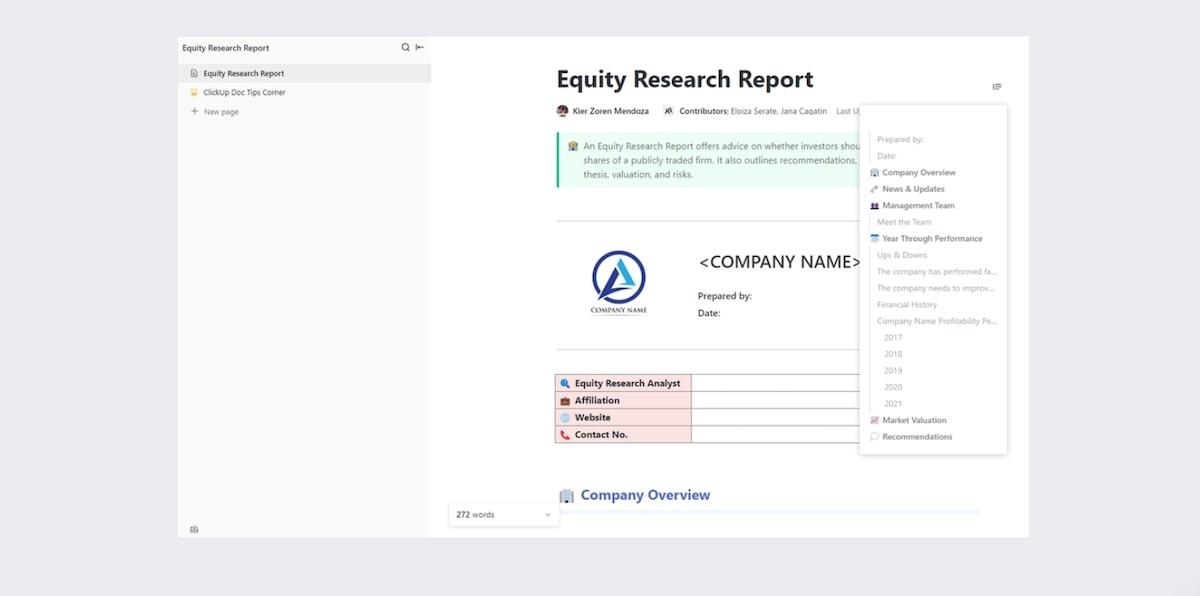
If you’re in the business of advising investors on what to do with their money, an equity report is a must-have. Instead of manually writing a new report every time, a research plan template can help you shortcut the process and get straight to the details.
Enter the Equity Research Report Template by ClickUp . It’s designed to help you share what you know in a more strategic way. Share an insight into the company overview, management team, performance, market valuation, and recommendations.
This research plan template has everything you need to present your findings to investors in an organized and effective way. Look like a pro to your investor clients and partners, and store all your data in a meaningful way to reflect on later.
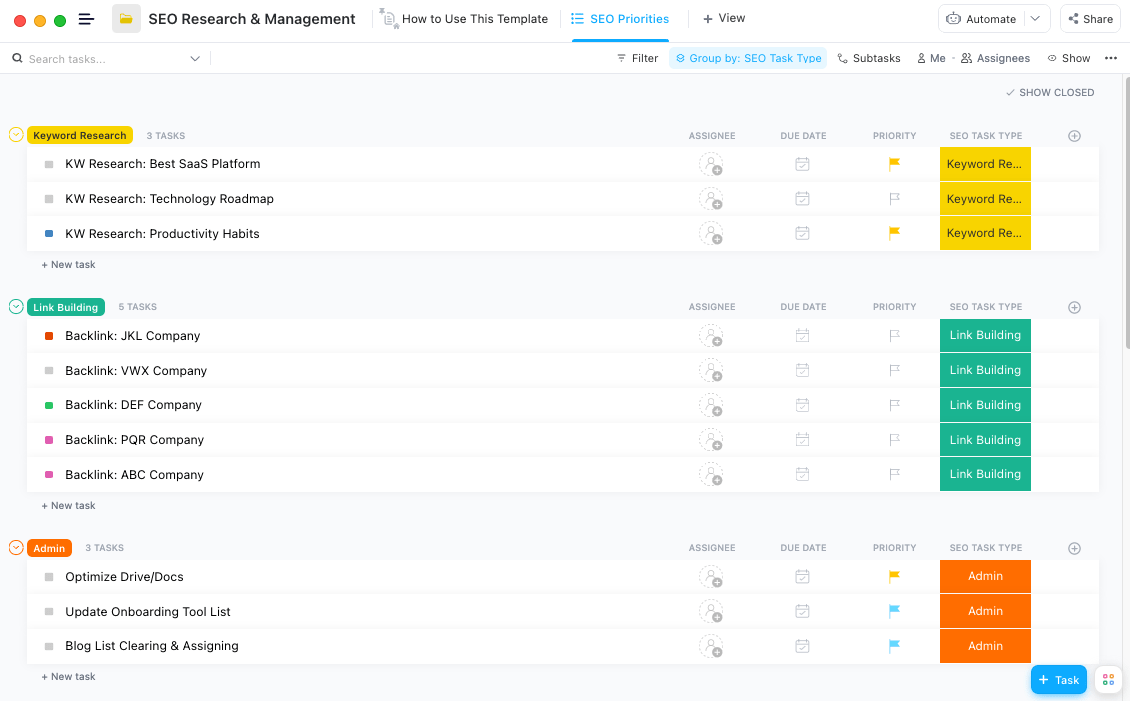
Staying on top of your company’s SEO performance is no easy task. There are so many moving parts, tools, projects, goals, and team members that you need a way to stay organized and productive.
Luckily for you, the SEO Research & Management Template by ClickUp is here to help simplify the process—and make you look good to your boss. This Folder template gives you a dedicated place to work on your SEO goals, with SEO-related custom fields and plenty of custom task types to help your team communicate progress and see roadblocks in your research plan.
Use this template to see at a glance where your SEO projects are, so you can be more proactive about how your team is working. You can also dive in to details and understand time estimates, publish dates, and where your rankings are at.
Check out these AI SEO Tools !

There’s no need to start from scratch every time you’re asked to put a research report together—instead use a template to make all your research questions and study reports as impressive as the last one.
Shortcut your way to success with the Research Report Template by ClickUp . There are sections for your executive summary, introduction, research method and techniques, results & discussion, references, and appendices. Add a report author and contributors, so you can recognize everyone that contributed to the report.
Share your research methods, approach, and findings with stakeholders and clients with this impressive template. It’s a useful foundation to help your team get organized and find a better way to update stakeholders on progress.

The Data Analysis Findings Template by ClickUp helps you present your data to everyone in a more meaningful way. Instead of presenting numbers and graphs, this template can help you go deeper into the problem statement, scope, analysis and research method, findings, and conclusion.
Use this template to help you organize your thoughts and communicate the results of your study in a transparent and easy-to-read way. Explain the context and background information alongside your approach, so your stakeholders can fully understand what the data shows.

A personal SWOT analysis can help you understand your (or your team’s) strengths, weaknesses, opportunities, and threats. This information can not only help you work better, but it means you can be more intentional about your impact on the wider company.
The Personal SWOT Analysis Template by ClickUp can help you remember to work on your SWOT analysis. Find your strengths, weaknesses or pain points, opportunities, and threats. This Task template features several custom fields designed to help you monitor your progress—including your objective, timeline, and completion rate.
This template can be a helpful reminder to focus on your personal SWOT analysis, so you can be more intentional and aware of how you contribute to your team and company’s goals and objectives. Use your personal SWOT to help you set professional goals for work and make a bigger impact.

Case studies give you a powerful insight into what your brands, clients, or competitors are doing. They’re an in-depth look into a specific area of the business, based on your personal research and findings.
Simplify the process of building your case studies with the Case Study Template by ClickUp . This template gives you a strong foundation for presenting clear, insightful case studies with your team, stakeholders, or clients. Introduce the company, your case study objective, solutions and statistics, and your insights.
Use this template to help you create case studies at scale. Present your data in a clear and concise way, with all the context your team or stakeholders need to extract the most value from the case study as possible.

Often our research helps us understand the market, our competitors, or what our own company is doing. Sometimes, it’s to help us understand incidents and challenges instead.
That’s where the Investigation Report Template by ClickUp comes in. This template is designed to help you report on accidents, complaints, incidents, and violations. Explain the case details including a summary and evidence, then move into cross-examination with space for interview questions and answers, and your conclusion.
This template is a must-have for teams and companies that want to demonstrate how they overcome challenges or handle incidents. It’s great for transparency and trust-building, and serves as a useful way to document a trail of evidence for when you need it.
Now that you have a template for your research plan, let’s dive into the details of how to write one. Follow these steps to create an effective research plan that will guide your research and help you achieve your goals.
Step 1: Identify Your Research Question
The first step in writing a research plan is to clearly define your research question or topic. This will serve as the foundation for all of your research and help guide your methods and analysis. Make sure your question is specific, relevant, and achievable within the scope of your project.
Step 2: Outline Your Objectives
Next, you should outline the specific objectives or goals of your research. These objectives should be aligned with your research question and provide a clear roadmap for your project. Be sure to make them measurable and achievable.
Step 3: Choose Your Research Methods
Based on your research question and objectives, you can now determine the appropriate methods for gathering data and conducting analysis. This may include surveys, experiments, interviews, or literature reviews. It’s important to choose methods that are suitable for your research topic and will provide reliable and accurate results.
Step 4: Create a Timeline
A research plan should include a detailed timeline for each stage of the project. This will help you stay on track and ensure that you have enough time to complete each task. Be realistic with your timeline and build in some buffer time for unexpected delays or challenges.
Step 5: Consider Ethical Implications
When conducting research, it’s important to consider any potential ethical implications. This may include obtaining consent from participants, ensuring privacy and confidentiality, or following ethical guidelines set by your institution or governing body.
Step 6: Anticipate Potential Outcomes
As with any research project, there are always potential outcomes that can arise. These could be both positive and negative, and it’s important to anticipate and plan for them. This will help you be prepared for any potential challenges or changes that may occur during your research.
Step 7: Revise and Refine Your Plan
Once you have completed the previous steps, it’s essential to review and revise your research plan as needed. It’s common for plans to change as the project progresses, so be open to making adjustments and tweaking your methods or timeline as needed.
Stay Organized with the Best Research Plan Templates
Nobody likes a disorganized project—especially a research project. Let your team breathe a sigh of relief and make your stakeholders smile when they realize you’ve got it all under control.
Use these free research plan templates to help you get organized, streamline your workflows, and keep everyone informed. Build a collection of templates that work for your projects, and make them a central part of the way you work as a team. Standardize, simplify, and get productive.
All of these research plan templates are available right now, for free, inside our template library . Get access to these user-friendly templates, 100MB of storage, 1,000+ integrations, and more with ClickUp—free now, and forever!
Questions? Comments? Visit our Help Center for support.
Receive the latest WriteClick Newsletter updates.
Thanks for subscribing to our blog!
Please enter a valid email
- Free training & 24-hour support
- Serious about security & privacy
- 99.99% uptime the last 12 months
- Sample Research
FREE 10+ Research Study Plan Samples in PDF

Are you working on your thesis or PhD study plan? If you are starting on your thesis or PhD study plan, perhaps you may feel some kind of pressure to work accordingly with a considerable amount of concentration and accuracy. To be a trustworthy researcher, you need to have a clear insight on the nature and primary target of research, the right selection of research methods, and many more important factors. What are the things you need to do in writing a research study plan ? In this article, we have some downloadable plan samples to guide you. Keep on reading!
Research Study Plan
1. research study plan template, 2. quantitative research plan template, 3. sample research study plan form, 4. master’s research study plan template, 5. simple research study plan, 6. thesis research study plan form, 7. proposed plan for research sample, 8. educational research study plan, 9. printable research study plan, 10. individual study plan template, 11. graduate research study plan sample, what is a research study plan, how to write a research study plan, 1. start building your desired goals , 2. develop an action plan, 3. construct essential research strategies, and project planning activities, 4. execute and revise your plan , what are the major elements of a research study plan, what is a good research plan, what are research methods, what are the four study skills.
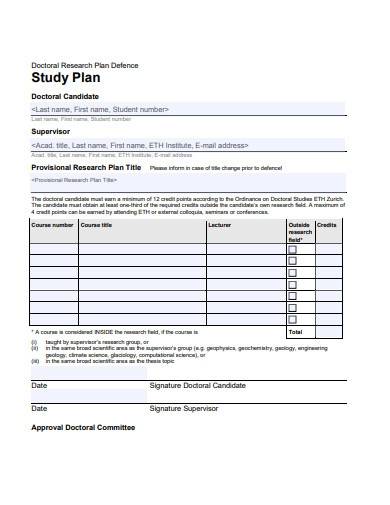
Size: 83 KB
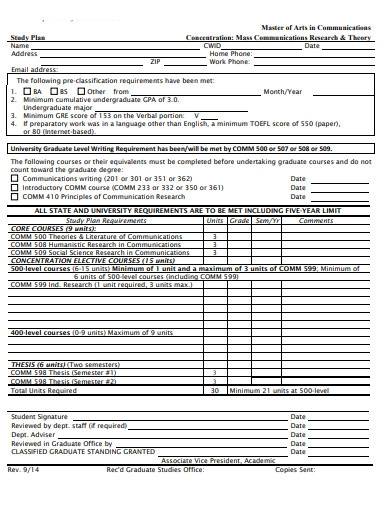
Size: 135 KB

Size: 11 KB
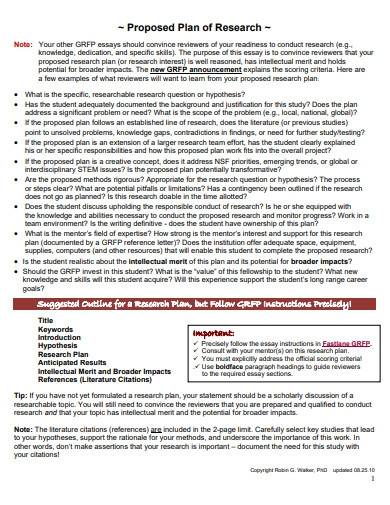
Size: 65 KB

Size: 645 KB
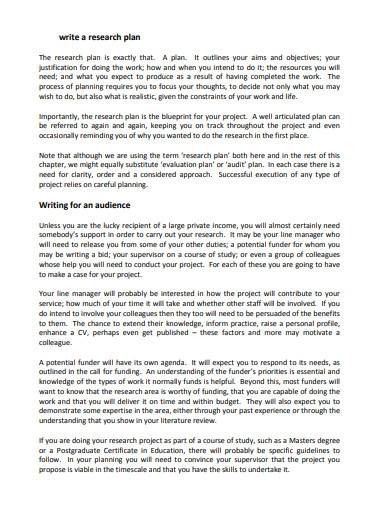
Size: 397 KB
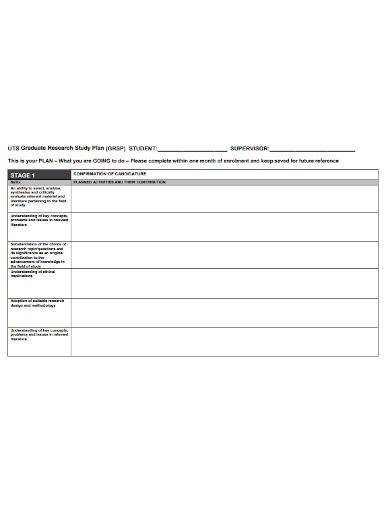
Size: 92 KB
A research study plan is a principal document lwhich is typically used to develop thesis, PhD plan, or other outputs of exploration. It also clearly demonstrates valuable interpretations of new ideas and concepts on a specific research project in a structured manner.
This is an all-inclusive guide written by professionals such as educators, scientists, medical practitioners, researchers, college students, graduate students, and many others in collaborating to their peers and other colleagues. Some examples of this document are PhD research plan, PhD research proposal outline, etc.
When writing a comprehensive research study plan for thesis or PhD, you need to maintain a systematic approach when it comes to developing the subject of your research study. So, you need to use your intellectual capability, critical analysis, and many more. Below are some helpful tips in writing an effective plan :
Walt Disney said: “A person should set his goals as early as he can and devote all his energy and talent to getting there. With enough effort, he may achieve it. Or he may find something that is even more rewarding.” Think deeper and get useful information while you start building your goals and objectives. We suggest that you contemplate the results you want to accomplish.
After building your research goals, you need to develop an effective action plan . For your research project , you must list down the necessary steps to be followed. Also, determine the materials, resources, and references that will be significant in your study plan.
The third step is to construct the essential research strategies and project planning activities to include in your plan for your research study. Some research strategies that you can use are exploration, testing and problem solving linked with your research goals and objectives. Determine your study requirements, as well as the status of your resources. Then, organize your tasks for your research process with some charts, graphs, tables, and other visual diagrams.
What do you need to do in order to execute your strategy? Make sure to keep your focus and fully support your major research goals of your plan . It is highly recommended that you apply the 80/20 principle and concentrate on the 20% that are your essentials. Avoid performing activities, tasks, reports, meetings, or projects that are irrelevant to your plan.
Be systematic and communicate proactively with your team members by consulting with others, especially if you need to know the real condition of your study plan from the perspective of others. This is important for reviewing and revising your plan, avoiding the possibility of any misunderstandings on your part.
The major elements of a research study plan are significant definitions, the general approach, a literature review, conceptual frameworks, the research questions and hypothesis.
A good research plan should contain clear and short introduction to the research field, topic relevance, and various kinds of methods used to attain results such as framework, new technical solutions, etc
Research methods are specific processes or techniques which are being used in collecting data or evidence for analysis to be able to reveal new information or develop better understanding of a particular topic.
The four study skills are effective reading, critical reading, styles of writing, getting organized, and note-taking.
In conclusion, writing an effective research study plan for your dissertation project or planning your PhD is a valuable way to gain success in your thesis, PhD program, or any research project you may have for the moment. Pablo Picasso said: “Our goals can be only reached through a vehicle of plan, in which we must fervently believe, and upon which we must vigorously act. There is no other route to success.” To help you in this matter, here are some of our downloadable and printable action plan samples available in different kinds of formats. Simply click the templates in this article and start downloading now!
Related Posts
Free 7+ sample seo plan templates in pdf ms word, free 10+ patient case study samples & templates in ms word ..., free 7+ sample research project templates in pdf ms word, free 8+ research agenda samples in pdf, free 9+ statistical analysis plan templates in pdf ms word, free 6+ sample self care assessment templates in pdf ms word, free 10+ marketing research proposal samples & templates in pdf, free 8+ market research samplesin pdf ms words | apple pages, free 11+ sample daycare business plan templates in ms word ..., free 10+ critical review samples in pdf ms word, free what should be included in a marketing plan [ how to write ..., free 24+ marketing plan templates in pdf, free 9+ sample sharing plan templates in pdf, free 15+ study schedule samples & templates in pdf ms word ..., free 7+ sample weekly timetable templates in pdf ms word, free 11+ research agenda samples and templates in pdf ms ..., free 12+ case study summary samples & templates in pdf, free 8+ sample research log templates in pdf ms word, free 10+ market research plan samples & templates in ms word ....
- PRO Courses Guides New Tech Help Pro Expert Videos About wikiHow Pro Upgrade Sign In
- EDIT Edit this Article
- EXPLORE Tech Help Pro About Us Random Article Quizzes Request a New Article Community Dashboard This Or That Game Popular Categories Arts and Entertainment Artwork Books Movies Computers and Electronics Computers Phone Skills Technology Hacks Health Men's Health Mental Health Women's Health Relationships Dating Love Relationship Issues Hobbies and Crafts Crafts Drawing Games Education & Communication Communication Skills Personal Development Studying Personal Care and Style Fashion Hair Care Personal Hygiene Youth Personal Care School Stuff Dating All Categories Arts and Entertainment Finance and Business Home and Garden Relationship Quizzes Cars & Other Vehicles Food and Entertaining Personal Care and Style Sports and Fitness Computers and Electronics Health Pets and Animals Travel Education & Communication Hobbies and Crafts Philosophy and Religion Work World Family Life Holidays and Traditions Relationships Youth
- Browse Articles
- Learn Something New
- Quizzes Hot
- This Or That Game New
- Train Your Brain
- Explore More
- Support wikiHow
- About wikiHow
- Log in / Sign up
- Education and Communications
- College University and Postgraduate
- Applying for Tertiary Education
- Scholarships
How to Write a Study Plan for a Scholarship
Last Updated: October 25, 2023 Fact Checked
This article was co-authored by Alexander Ruiz, M.Ed. . Alexander Ruiz is an Educational Consultant and the Educational Director of Link Educational Institute, a tutoring business based in Claremont, California that provides customizable educational plans, subject and test prep tutoring, and college application consulting. With over a decade and a half of experience in the education industry, Alexander coaches students to increase their self-awareness and emotional intelligence while achieving skills and the goal of achieving skills and higher education. He holds a BA in Psychology from Florida International University and an MA in Education from Georgia Southern University. This article has been fact-checked, ensuring the accuracy of any cited facts and confirming the authority of its sources. This article has been viewed 239,197 times.
If you are asked to write a study plan for a scholarship, you may not know where to begin. Basically, a study plan describes what you'll be studying and why. One common scholarship committee that asks for study plans is the China Scholarship Council (CSC). Start by establishing your main educational goals, and then talk about how you plan to achieve them. Conclude your study plan, and spend time refining your writing.
What to Write About

- For instance, maybe your main goals for studying in China are to gain a bachelor's degree in business and learn Chinese because it's becoming a global language. You could write, "My main two educational objectives are to gain a bachelor's degree in business and to learn to speak Chinese. Chinese is becoming a global language, so I feel it's necessary to learn it."

- For instance, you might write, "I was born in the United States, but my grandparents on both sides are Chinese. I chose this business program because I want to connect with my heritage, improve my Chinese, and eventually, help establish better relations between China and the U.S. by improving trade relations."

- For example, you might say, "As a PhD candidate, I plan to conduct research on how ancient tradition and ritual influence contemporary Chinese culture, which will include a literature review and extensive interviews with historians and a small sampling of the Chinese population."

- It can help to draw a conceptual model. Start with the antecedents (the causes) and the mediators (the processes that change the antecedents). Finish with the outcomes. Draw lines between them to help you see which variables are more central to your problem.
- Consider asking peers or professors to look at your research proposal. They may be able to help you narrow.

- For instance, you might say, "One of my long-term goals is to open an import business from China to the United States, and learning about business in China will be essential to making my endeavors a success."
Explaining Your Plans

- For instance, if you plan on doing a PhD where you'll need participants, discuss how you'll find people for your study. You might say, "I plan to put out an ad to gain participants for a focus group, as well as contact historians by phone and email for interviews."

- For example, you might write, "I anticipate the language barrier will be an issue at first. However, I plan to work hard early on to learn the language, and I am already taking intensive classes now."

- To help you choose, do a thorough literature review. Look at the research that has been done in the area you plan to study. Note the primary methods used to do the research and the pros and cons of each. Choose a method based on what you think will work best for your research. [6] X Trustworthy Source American Psychological Association Leading scientific and professional organization of licensed psychologists Go to source

- For instance, you might use simple random sampling or systematic sampling when the whole population is similar based on the variables for your study. On the other hand, a stratified random sample is often used when you have people who are different from each other based on your variables.
Concluding and Refining Your Writing

- For example, you might write, "Thank you for considering me for this scholarship. If I receive this award, I can focus solely on my studies. I will work hard to implement my goals of learning Chinese and gaining a business degree at a Chinese university, and your trust in me will not be wasted."

- You don't need to write as if you're talking to a child. However, you should write so someone outside of your discipline can easily understand your plan.

- The space for the study plan on the CSC application is only a couple of lines. However, the application suggests you attach more paper as needed.

Scholarship Study Plan Template

Community Q&A
You Might Also Like

- ↑ https://www.ecpi.edu/blog/how-to-set-educational-goals-and-meet-them
- ↑ https://bangalorestudy.com/blog/factors-to-consider-while-choosing-a-school
- ↑ Alexander Ruiz, M.Ed.. Educational Consultant. Expert Interview. 18 June 2020.
- ↑ http://www.apa.org/gradpsych/2005/03/methods.aspx
- ↑ https://www.collegedata.com/resources/money-matters/10-ways-to-stand-out-when-applying-for-scholarships
- ↑ http://www.natco1.org/research/files/SamplingStrategies.pdf
About This Article

If you’re unsure how to go about writing a study plan for a scholarship, focus on explaining your educational goals and discussing how you’ll achieve them. Begin by briefly stating what you want to study and why. For example, you might say you want to study business management in China so you can learn Chinese, because it will soon be a global language. Then, provide some personalized reasons as to why you chose the school you want to go to, such as research interests or long-term goals. After laying out your goals, show the scholarship committee how you’ll achieve them. If you’ll be carrying out research, for instance, write about how you’ll find participants for your study. You should also try to mention possible obstacles and how you’ll overcome them, since the committee will be impressed to see you’re thinking ahead. For tips on how to proofread your study plan before sending it off, keep reading! Did this summary help you? Yes No
- Send fan mail to authors
Reader Success Stories
Lusine Ohanyan
Mar 4, 2019
Did this article help you?

May 30, 2020
Apr 3, 2019

Featured Articles

Trending Articles

Watch Articles

- Terms of Use
- Privacy Policy
- Do Not Sell or Share My Info
- Not Selling Info
wikiHow Tech Help Pro:
Develop the tech skills you need for work and life
All Formats
Table of Contents
Free 10+ research study plan templates in pdf | ms word, 1. research study plan template, 2. university research study plan template, 3. doctor research study plan template, 4. research study plan example, 5. general research study plan template, 6. research study plan template in pdf, 7. sample research study plan template, 8. school research study plan template, 9. research study proposed plan template, 10. basic research study plan template, 11. research study plan template in doc, what is a study plan and why is it needed, tips on how to create a study plan, plan templates.
A study plan refers to a list of your course’s subject criteria and specifies when you will research the intended topics. This lists the topics you’ve finished; are specifically interested in; expect to research in the future; and those you’ve been given advanced standing for. When this study plan is developed for the purpose of a research, it is known as a research study plan.

Proper Planning Yields Better Results
Time wasted is never regained, procrastination is the thief of time, increased productivity, less stress, time for the unexpected, 1: analyze your current study habits and learning style, 2: evaluate your current schedule and time management, 3: plan how much time you need for each topic, 4: develop a schedule, 5: assess your weekly calendar, 6: stick to your schedule, more in plan templates, editable research flowchart template, research poster template for keynote, education research agenda template, research agenda template, legal research methodology ppt template, medical research template, research template, qualitative research template, psychology research template, college research template.
- 7+ Financial Plan Templates
- 10+ Operational Plan Templates
- 9+ Training Plan Templates
- 5+ Shooting Schedule Template
- 11+ School Counselor Lesson Plan Templates in PDF | Word
- 9+ Interdisciplinary Lesson Plan Templates in PDF | MS Word
- 10+ Business Continuity Plan Templates in Google Docs | Ms Word | Pages | PDF
- 18+ Compensation Plan Templates in Google Docs | MS Word | Pages | PDF
- 10+ Executive Bonus Plan Templates in PDF
- 8+ Facility Management Plan Templates in PDF
- 10+ Diversity Recruitment Plan Templates in PDF | MS Word
- 11+ Audit Corrective Action Plan Templates in MS Word | Excel | PDF
- 9+ Recruitment Agency Marketing Plan Templates in PDF
- 10+ Recruitment Marketing Plan Templates in PDF | MS Word
- 10+ Student Recruitment Plan Templates in PDF | MS Word
File Formats
Word templates, google docs templates, excel templates, powerpoint templates, google sheets templates, google slides templates, pdf templates, publisher templates, psd templates, indesign templates, illustrator templates, pages templates, keynote templates, numbers templates, outlook templates.

27 Free Study Plan Templates to Edit, Download, and Print
There might be affiliate links on this page, which means we get a small commission of anything you buy. As an Amazon Associate we earn from qualifying purchases. Please do your own research before making any online purchase.
Looking for a study plan template to improve your academic performance?
Today’s post features a collection of downloadable study plan examples that you can edit and print for personal use. The best part is that they’re all free.
Time management is one of the most challenging aspects of student life. You have your classes to keep track of, and you likely also have extracurricular activities to balance out the academics. You might also have a part-time job. Plus, there’s always your social life to attend to.
A study plan schedule is essential to make sure that you can learn everything in time and master the course material. So if you're not sure HOW this process works, then check out this proven 11-step process to create a study plan that works .
Okay, let's start by talking about the benefits of having a study plan and then we'll dive into the study plan templates you can use.
Table of Contents
The Benefits of Having a Study Plan
Study plans are an effective tool that show you how you spend your time.
You want to make sure that you’re setting aside a sufficient amount of time to study for tests, do your assignments, and complete your projects.
With the rise of online learning, study plans are more important than ever. Using them fosters self-discipline and accountability . It prevents procrastination and helps you develop better study habits , which usually translate to better grades.
To get started, here are three action pads and planner journals that can help you study:
- BestSelf's Weekly Action Pad
- Miliko A4 One Semester Study Planner/Organizer
- PAPERIAN Believe TIME Tracker
And in the following article, you'll find 27 free study plan templates. These work great for students in elementary and middle school, as well as high school and college students, homeschoolers, and those attending online classes.
1. Study Planner with Reading List Template
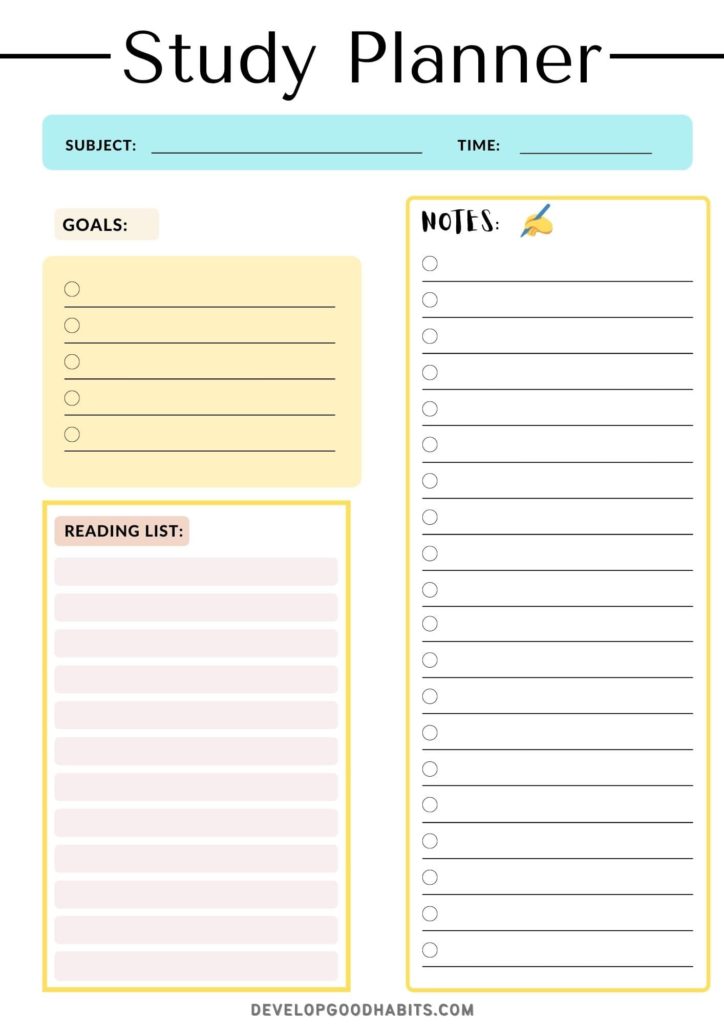
Download the PDF
Are you in for week of intensive academic reading? Our very own Study Planner with Reading List template can help you organize your notes and thoughts and prioritize your schedule so you can stay on top of it all.
Use this template for each one of your subjects to write down your goals and important notes and list down all the materials you need to read so you don’t forget anything. This template comes in A4 size.
2. Study Planner and Schedule Template
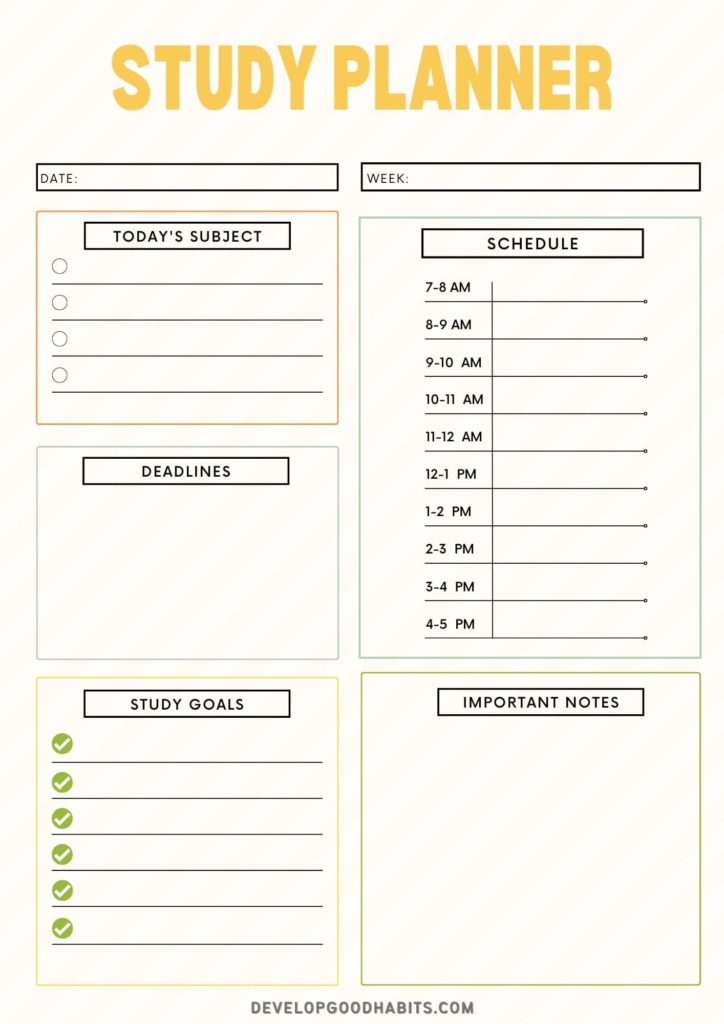
If you’re a student who likes to plan out your day in advance, our Study Planner and Schedule template may come in handy. We’ve dedicated spaces for all of your subjects, an hourly schedule, deadlines, study goals, and important notes so you can see your day’s priorities in a glance. This template comes in A4 size.
3. Unit Study Plan
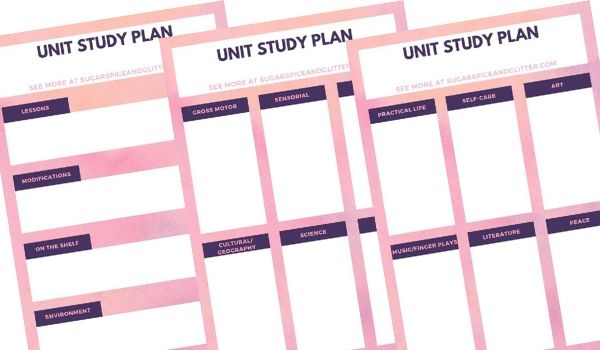
via Sugar, Spice & Glitter
Given the global situation in recent years, homeschooling has become increasingly popular. In many households, parents have become teachers for children who are forced to stay home and shelter in place.
These parents need tools to organize and keep track of lessons. This template works well for homeschoolers as a tracker for unit studies.
This study plan has a Montessori framework , featuring subjects such as:
- Practical life
You can easily modify the titles of the boxes if you’re homeschooling but not using the Montessori model.
4. Black and White Study Planner
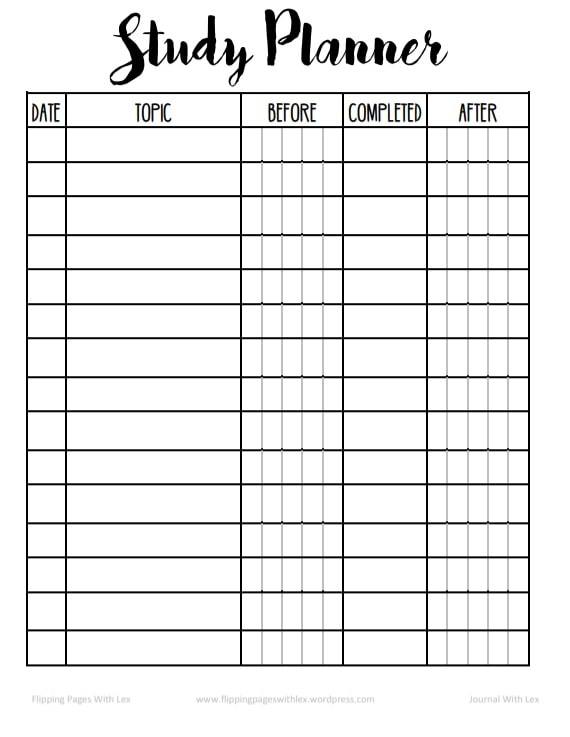
via Flipping Pages With Lex
If you’re looking for a black-and-white themed study planner, you might want to give this sample a try. It has five columns featuring Date, Topic, Before, Completed, and After.
This template can be especially helpful if you’re studying chapters or units. It is also applicable for tracking homework and school projects.
5. Let's Study
This template features a minimalist design with a peach background. It comes with checkboxes, making it easier to keep track of your schoolwork.
The template has spaces allocated for Monday to Friday, as well as for the weekend.
If you’re looking for a straightforward template, the uncluttered look of this one might appeal to you.
6. Study Time Table
This timetable shows your schedule for the entire week on one page. It is helpful in reminding you about appointments, exams, or other important academic events.
It features a seven-day calendar, with time slots from 7:00 am to 10:00 pm.
To further help keep track of your schedule, this timetable comes with icons to specify the categories of your activities. Some of these icons include:
There is also space allocated near the bottom of the page for study notes.
7. Harry Potter-Inspired Daily Productivity Planner
If you’re a Harry Potter fan, this productivity planner might appeal to you.
It features spaces for writing down your tasks, and lets you state how much time you’re allocating for a particular task and what particular subject the schedule is for. There is also a progress tracker for each task so you know how far or near it is to completion.
There are also two boxes on the lower half of the page where you can write down reminders and comments.
What really makes this a Harry Potter-themed planner is the quote found on the lower right-hand side of the page. The words of Professor Severus Snape remind this planner’s user that:
“ The mind is not a book to be opened at will and examined at leisure. Thoughts are not etched on the inside of skulls, to be perused by an invader. The mind is a complex and many-layered thing. ”
8. Blue and Yellow Schedule Printable
This printable planner is designed to help older school-age kids keep track of their schoolwork and develop good study habits.
It has a section where the schedule for the day can be written down, with hourly intervals. This is a great way to introduce kids to time blocking, which is a very helpful tool for productivity and organization.
Space is also designated for writing down daily to-dos, such as homework and chores. There are also spaces for a list of specific goals and notes (e.g., reminders and other important information).
9. Printable Student Planner Pages
If you’re looking for a planner that fits into your binder, this template is worth your attention. It contains all the features you need in order to keep track of assignments, upcoming tests, homework and project deadlines, and school activities.
There is sufficient space to write things down without forcing yourself to use very tiny letters. The planner pages are also undated, giving you flexibility when it comes to organizing your study schedule.
10. Weekly Assignments Printable
Need something to help you prioritize and keep track of assignments from different classes? This printable template is the perfect solution.
To help organize your weekly class assignments, this printable is divided into three major sections.
The first section features sufficient space for listing all your assignments from different classes. This section lets you identify assignments for specific classes and their due dates. If you’re done with an assignment, you can put a mark in the checkbox next to each item.
The template’s second section features a reminder box. Finally, the third section is a mini-calendar with boxes assigned for each day of the week. Here, you can write down important dates so you don’t miss a single deadline.
11. Study Session Planner
Exams coming up? Need a system to help boost your grades this semester?
This planner can help you out with clear-cut guidelines for an effective study routine. It’s full of features that not only enhance your productivity, but also ensure you develop solid study habits that you can use beyond your academic life.
This planner starts off with a checklist of things you need to prepare prior to studying, such as clearing your desk, ensuring that you’ll have minimal distractions, preparing study snacks, and finding music to help you concentrate.
It has space allocated for a list of your tasks, a hydration tracker (because being dehydrated makes it difficult to concentrate), and time management tracking (a Pomodoro ratio and procrastination list). Spaces are also designated to note post-study treats, achievements, and reflections.
12. Today’s Study Session Planner
This template is perfect if you’re looking for a planner to help you focus on studying for a particular subject. It features sections for listing three priorities during the session, topics to study (with checkboxes you can tick once done), and your goals for the day. There are also spaces dedicated for writing notes and indicating the total time studied. Finally, a mini-chart lets you track the number of study breaks taken during a session.
13. Homework Planner Pack
Perhaps you’re getting overwhelmed with the amount of homework and assignments given at school. This homework planner can be used for any grade level to help students organize their schedules, develop good study habits, and meet homework deadlines.
It features ample space where you can list all the upcoming homework, projects, and tests you have for the week, as well as a section where you can indicate due dates and dates of completion. This template comes in three different designs.
14. Pink Study Planner
If you’re looking for a planner that helps monitor your study hours and progress, here’s one that you might want to try. It has a pink theme with spaces assigned for the following:
- Study progress
- Study hours (expected and actual)
- Today’s subject
To get good results in your study goals, make sure to use your planner consistently to organize and remind you about your schoolwork.
15. Study Timetable
A study timetable like this one can be a major lifesaver for students. It helps set routines that save energy and prevent stress when it comes to taking care of schoolwork.
This timetable is in landscape format with a Monday start and has spaces for plotting out your study schedule and other activities from 8:00 am to 10:00 pm.
16. Student Planner Pack
This student planner pack has everything you need to hone your good study habits. The pack contains eight types of study planners that keep you motivated, organized, and productive, whether you’re in high school at university.
These planners can be printed out in A4, A5, or letter size.
Some of the templates you’ll get in the pack include:
- Weekly timetable
- Assignment tracker
- Goal-setting
- Reading list
17. Printable Study Pack
Here is another study plan pack with 10 different planners to help streamline your studies and other academic activities.
The planners are undated for continuous use and feature a simple and elegant design so as not to distract the user from focusing on their studies. The following are included in the pack:
- Daily, weekly, and monthly study planners
- 10-minute planner
- Study plan worksheet
- Study session tracker
- Subject and chapter summary worksheets
- Priority breakdown worksheet
These planners and worksheets are in landscape format and are downloadable in A4 size.
18. College Student Study Planner Printables
College life can be overwhelming. This set of planner printables is designed to give your academic schedule structure that minimizes overwhelm and increases success.
Some of the templates that will help you succeed include:
- Study planner
- Study checklist
- Project planner
- Exam timetable
- Semester overview
- Weekly and monthly calendars
19. The Ultimate College Planner
This set of templates has everything you need to stay on top of your academic life. Designed for college students, this set offers colorful templates and organizers for the following purposes:
- Setting goals
- Organizing class and extracurricular schedules
- Improving study habits
- Keeping track of important dates
Signing up for the newsletter gives you access to this printable planner set.
20. Charlotte Mason Homeschooling Planner
Homeschooling usually has a less rigid schedule than conventional education. However, a homeschooling schedule still needs structure so that homeschoolers can maximize their learning.
This homeschooling planner follows the Charlotte Mason methodology and provides ample space for planning out and organizing an entire year of homeschool.
The planner contains calendars, schedule charts that are especially useful for plotting out a study schedule, weekly spreads, subject notes, and more.
21. Exam Revision Planner
Studying for an exam? Here’s a planner that will help you ace that test.
This planner ensures that you are well-prepared for the exam by letting you break down everything that you need to study into manageable bits.
The PDF template comes in A4 size, which is downloadable in pink, purple, blue, gray, and black & white.
22. Minimalist Unit Study Planner
This template set helps you gain a deeper understanding of a topic/lesson, whether you’re studying or teaching it. It can be used in both homeschooling and conventional education environments to help explore a subject matter from different angles.
23. Semester Study Planner Template
This eight-page planner set is ideal if you’re looking for templates to help you organize your schedule and track your academic progress. It also comes with templates for time management.
The set has a teal color scheme, with features such as:
- Syllabus study planner
- Pomodoro planner
- Checklist for getting organized
- Concept confidence tracker
24. Undated Hourly Five-Day Study Planner
Keep track of your time and manage it well with these planners. You can add in the categories of your choice for your schedule (e.g., work, class, study area, etc.).
A 10-minute planner is found on the bottom half of the page to give you an overview of how you utilize your time each day. The planners come in five different colors, as well as in black & white.
25. Productive Academic Life
This study planner allows you to plot out your schedule for the day and specify the date and the day of the week.
There are spaces for you to write down the following:
26. Editable Student Planning Binder
This planner binder is designed especially for young students. It allows them to have a central place for assignments and other essential documents in class.
Some of the templates included in the 49-page binder are:
- Study goals
- Notes for the week
- Important reminders
- Weekly study planner
27. Daily Study Planner
This daily study planner helps manage daily schedules to maximize your study hours. In addition to the date, you can write your study time goal in hours and minutes, as well as the actual duration of time you spent studying.
It also features space for listing down tasks, with a column alongside each task where you can specify the amount of time (in hours and minutes) you need to complete it.
A time table is also provided, as well as spaces for indicating the subject/chapter/topic/ being studied, study materials, and some notes.
Final Thoughts About Using a Study Plan Template
There you have it—a collection of study plan samples to help you this school year.
So pick one that will best match your needs.
Keep in mind that, in order to reach your academic goals, it’s not just about filling out a student planner. It also involves your commitment to better study habits and embracing a time-management strategy that works for you.
When you have all these, you’ll be set to survive the semester. You may even have a more stellar academic performance.
If you need further resources about study plans and other tools to help in your academic life, check out the following posts:
- The Study Plan Schedule Strategy (That Actually Works!)
- 11 Good Study Habits to Better Understand Your Lessons
- 9 Best Study & Academic Planners for Students
- 14 Best Books on Learning and Building Great Study Habits
- 20 Self-Education Habits to Educate Yourself on Anything
Never stop learning!
Finally, if you want to level up your productivity and time management skills, then watch this free video about the 9 productivity habits you can build at work .


Qualitative Research Plan

Every drop counts . Because research requires the input of resources—money or kind—it should have a justified return. You may be fine with throwing away a few dollars, but what about thousands of dollars? And what if you could shorten five months of hard labor into half? Think of all the other things you could have done with your time and money. When you have a research plan , you can save yourself the avoidable hassle of losing your mind to stress at 3 AM.
Before the board or your academic mentors give your study a signal, you have to show them that you know what you’re doing. A research plan is your research roadmap. And like any map, you use the plan to steer you and your team in the right direction. In essence, it is a document that reminds the researcher of the important details about the study.
Plan vs. Proposal
A research plan is different from a research proposal . Although both talks about the study, the proposal is meant to sway opinion to favoring the conduct of the study. You also use proposals when you want to acquire study grants from higher institutions. A plan is for your perusal. As a researcher, you tend to become immersed in your study. By following all the promising trails, you may get lost in the process. Having a plan at arms reach lets you keep yourself on track. When you include a project timeline in your document, you can also track your progress along the way.
Qualitative vs. Quantitative
The rift goes way beyond numbers or the lack of thereof. The difference between the two isn’t because one is better than the other. In fact, a lot of research fields can benefit from the input of both methods. The choice between the two lies in what kind of question you want to answer. Qualitative research is appropriate for pioneer studies or those that require a deeper understanding of opinion, experiences, and encounters. Some things cannot be reduced to ones and zeroes. There are different methods for performing qualitative research. You can use interviews, focus groups, surveys , or observations. The versatility and cost-effectiveness of these methods make them a popular resort to researchers.
However, we cannot reduce quantitative research as a cold way to see the world. Quantitative research places measurements on things like opinion, behavior, and other variables. This method is more analytical and structured than qualitative research. Because most of the subjectivity is removed in data collection and analysis, the findings that are true for a small group can be used to generalize a bigger population. Most research in hard sciences is quantitative because the replicability of the results generally makes for credible results, especially when the only witnesses of the described event are the scientists in that lab. This research also makes use of surveys and questionnaires, provided that the observations can be represented in numerical data afterward.
Plan Framework
In general, the plans adhere to the same format, although you can see derivations in the names of the headers or the arrangement of the sections. The document is like a proposal, except that the details are made for the researchers themselves. Research plans can be a precursor to research proposals. Hence they tend to have similarities in the document structure.
Research Question: This is the cold brew of your research study that kickstarts the entire research endeavor. This is the challenge or the issue that you want to address with your study. When you have a poorly-defined research question, you might as well forget about getting that research grant . The question is a lead on what the study will cover and the gaps in related literature.
Hypotheses: These are your well-educated predictions on the results of the study in answer to your research questions. Your entire research design is grounded in testing these hypotheses. That is why your guesses must be backed by established and credible information. It is also these hypotheses that will be supported or refuted by succeeding studies.
Objectives: Objectives will influence the research design because what you want to accomplish will direct the methods you’ll use. When well-defined, they will steer you straight in the right direction. This means that they should be appropriate for your study. In devising your objectives , you should remember to make them specific, measurable, achievable, relevant, and time-based.
Research Design: Because a research plan is like a rough sketch of your study, it includes your actual plan on how you will perform your investigation, as well as your list of materials and equipment. The details don’t have to be refined and specific, but they should convey the general idea. You can create a research flowchart of your methods to visualize the process better. Aside from being a map of the research, it is also an inventory check to see if you have the things you need for the study.
Examples of Qualitative Research Plans
People learn by example. Check out the following qualitative research plans that would help you with your content. You can download these PDF files as your guide.
1. Research Plan Sample
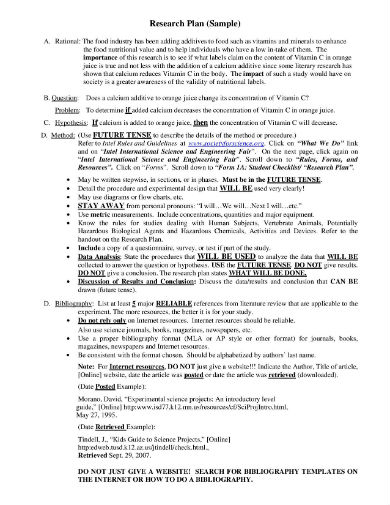
Size: 22 KB
2. Research Plan Guide
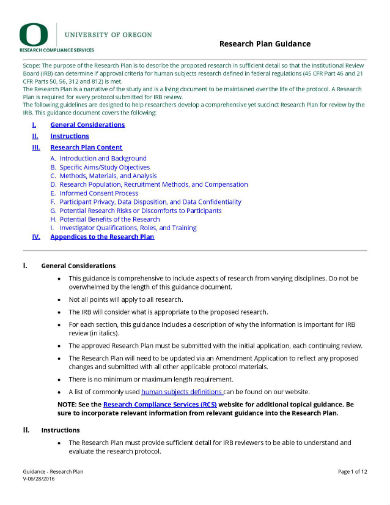
Size: 264 KB
3. Research Plan Abstract
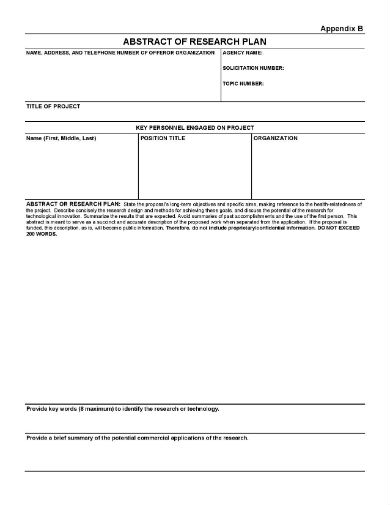
Size: 73 KB
4. Research Plan Outline
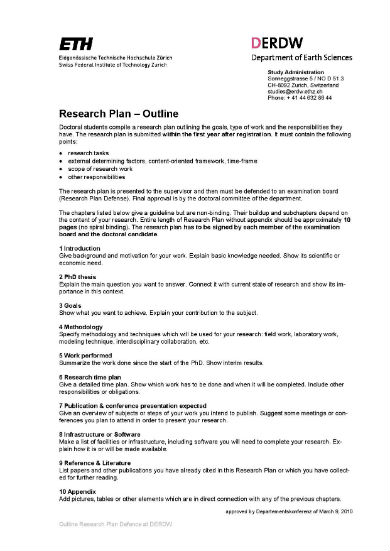
Size: 106 Kb
5. Research Plan Example
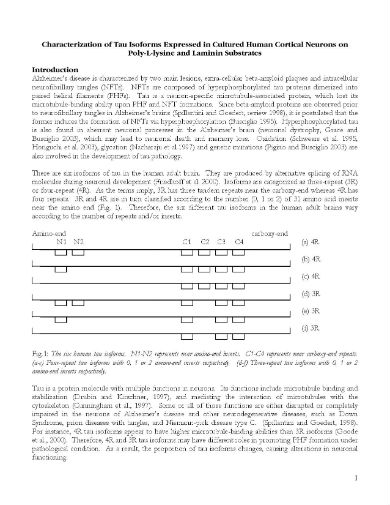
Size: 116 KB
6. Funded Research Example
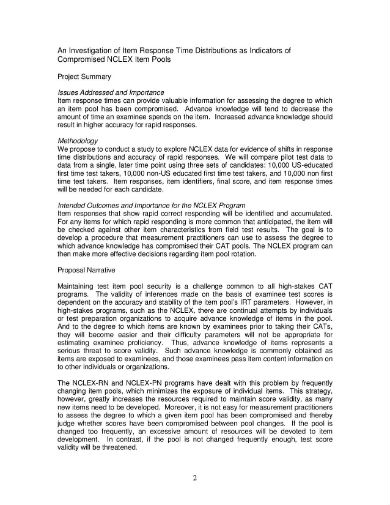
Size: 89 KB
7. Data Analysis Plan
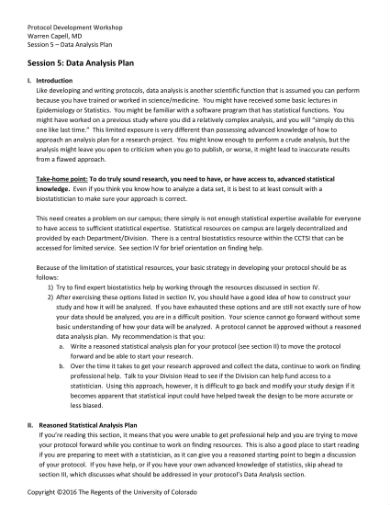
Size: 941 KB
Preparing a Research Plan
Your research plan is for your use. It is meant to guide you throughout the entire research conduct . However, when you’ve set your standards too high and your plan is too idealistic, your performance and results might disappoint you. How do you make a plan that will work for you?
1. Research Your Research
When you want to answer a problem, you first have to be knowledgeable about it. Especially when you are applying for a research grant, your benefactors should have the impression that you know what you’re doing. You have to scour sources for related literature. Maybe the study has already been done, or there is a similar problem that has already been solved. By being diligent in your literature review, you can get a grasp of the issue’s relevance to society. Because you are learning more about the subject, you can identify methods and approaches that you can apply. By now, your study is taking shape.
2. Draw a Complete Map
This is a large section of your research plan. It describes what you want to come out of this study and your expectations. You will also write about your course of action to realize those goals. There is a domino relationship shared by your research questions, objectives, and methodology . The former two determine your methods. And the three will have a significant bearing on your results. You can use established methods provided that you justify why you use them. You can be as specific as possible. But because the plan is preliminary, you can expect changes along the way.
3. Be Practical and Realistic
As a researcher, you would want to make a significant contribution to the world. However, being too ambitious without the capacity to back it up will have negative consequences for your study. Therefore, when you plan a study, you have to look at your available resources. If you plan on procuring materials for the study, will they arrive on time? Is your expected schedule for deliverables realistic? Is your expectation for the study reasonable? You can add a timetable and a breakdown of foreseen expenses in your plan. That way, you can stick to your schedule and your budget.
4. Track Your Progress
Your research plan should be with you throughout the study period as a reference. You can view it to review your next steps or spot the ones you missed. Will the activities still fit the determined period? The chances that you will run out of time on an activity. Don’t create a rigid time frame. The future is unpredictable, so you should include a time allowance for each activity. You can also use Gantt charts to monitor your progress. The charts will let you see how much you have accomplished and how much work is left.
In any research endeavor, it pays to be prepared. We can’t predict the future, but when we have a plan on how to live with this uncertainty, we can mitigate losses. As a researcher, you can integrate research plans in the conduct of your studies. The document can influence the success of your investigation.
Text prompt
- Instructive
- Professional
Create a study plan for final exams in high school
Develop a project timeline for a middle school science fair.

IMAGES
VIDEO
COMMENTS
If you want to learn how to write your own plan for your research project, consider the following seven steps: 1. Define the project purpose. The first step to creating a research plan for your project is to define why and what you're researching. Regardless of whether you're working with a team or alone, understanding the project's purpose can ...
Customizing a research plan template. Some companies offer research plan templates to help get you started. However, it may make more sense to develop your own customized plan template. Be sure to include the core elements of a great research plan with your template layout, including the following: Introductions to participants and stakeholders
A good UX research plan sets out the parameters for your research, and guides how you'll gather insights to inform product development. In this chapter, we share a step-by-step guide to creating a research plan, including templates and tactics for you to try. You'll also find expert tips from Paige Bennett, Senior User Research Manager at ...
The 7 core components of a user research plan: The background of the research project detailing why we are conducting this study. This can also include the internal stakeholders involved. The objectives and goals of the research, what the teams want to learn from the research, or what they would like the outcome to be.
A research plan is a framework that shows how you intend to approach your topic. The plan can take many forms: a written outline, a narrative, a visual/concept map or timeline. It's a document that will change and develop as you conduct your research. Components of a research plan. 1. Research conceptualization - introduces your research question.
Research proposal examples. Writing a research proposal can be quite challenging, but a good starting point could be to look at some examples. We've included a few for you below. Example research proposal #1: "A Conceptual Framework for Scheduling Constraint Management" Example research proposal #2: "Medical Students as Mediators of ...
How to plan a UX research study. This is a step-by-step guide to planning user research. It explains the process by which a research plan comes together into a shareable document (like the one above) that enables team alignment, accountability, and efficiency throughout your study. 1. Identify your research goals.
Step 1: Consider your aims and approach. Step 2: Choose a type of research design. Step 3: Identify your population and sampling method. Step 4: Choose your data collection methods. Step 5: Plan your data collection procedures. Step 6: Decide on your data analysis strategies. Frequently asked questions.
Follow Examples. As you read this page, look at our Sample Applications and More to see some of the different strategies successful PIs use to create an outstanding Research Plan. Keeping It All In Sync. Writing in a logical sequence will save you time. Information you put in the Research Plan affects just about every other application part.
Step 4: Write a summary. Prepare a project summary that serves as your research project guide. This invaluable tool aids recruitment interviews, meetings, and field studies. With a well-structured summary, you can stay on track during interactions, ensuring you address key project aspects.
Research plans generally contain information such as: Background information with general insights into what you already know, why you're conducting the study, and what the problem is. The objective of your research and what you're trying to accomplish. Research questions, both primary and secondary, to guide your experiment. The participants and recruitment methods to bring together a ...
Step 1: Alignment & Requirements Gathering. Research rarely will happen in a vacuum. Usually you are working with a team—product, engineering, design, for example. When the need for a research study arises, the first thing you want to do is meet with your team to understand the questions they're trying to answer.
A research plan communicates important information about the who, what, why, when of research. Together with the research roadmap and protocol, these documents ensure everyone is aligned and know their roles in the research. To create research plans quickly, I have a master template to use as a starting point for every project.
A UX research plan, also known as a user research plan, is a brief reference document that outlines your research project's goals, key contributors, important dates, and timelines. Think of your research plan as a UX-focused kick-off document for your project. The plan offers an overview of the research initiative, encourages well-defined and ...
What is a Research Study Plan? A research study plan is a short and comprehensive written document which is commonly used for the successful development of a particular clinical trial, research project, thesis, PhD plan, doctoral degree plan or other outputs of in-depth analysis and exploration. It also fully illustrates useful explanations of contemporary ideas and unique concepts on a ...
The research plan, however, serves another, very important function: It contributes to your development as a scientist. Your research plan is a map for your career as a research science professional. As will become apparent later in this document, one of the functions of a research plan is to demonstrate your intellectual vision and aspirations.
Step 1: Consider your aims and approach. Step 2: Choose a type of research design. Step 3: Identify your population and sampling method. Step 4: Choose your data collection methods. Step 5: Plan your data collection procedures. Step 6: Decide on your data analysis strategies. Other interesting articles.
1. ClickUp User Research Plan Template. ClickUp User Research Plan Template. One of the first things that comes to mind when you say "research plan template" is user research. For development and project teams, this is one step of the process where strategy and staying organized is essential.
A research study plan is a principal document lwhich is typically used to develop thesis, PhD plan, or other outputs of exploration. It also clearly demonstrates valuable interpretations of new ideas and concepts on a specific research project in a structured manner.
1. Wrap up your study plan with a short summary. At the end of the plan, reiterate why you want to study at your chosen program, and repeat why it is important for meeting your goals. Also, add a few words about how the scholarship can help you achieve your goals.
A study plan refers to a list of your course's subject criteria and specifies when you will research the intended topics. This lists the topics you've finished; are specifically interested in; expect to research in the future; and those you've been given advanced standing for. When this study plan is developed for the purpose of a research, it is known as a research study plan.
And in the following article, you'll find 27 free study plan templates. These work great for students in elementary and middle school, as well as high school and college students, homeschoolers, and those attending online classes. 1. Study Planner with Reading List Template. Download the PDF.
A research plan is your research roadmap. And like any map, you use the plan to steer you and your team in the right direction. In essence, it is a document that reminds the researcher of the important details about the study. Plan vs. Proposal. A research plan is different from a research proposal. Although both talks about the study, the ...